|
4/11/2022 0 Comments NEWNESSnew /njuː/ adjective
There’s something about new possessions, places, phases in life and even people. We could be subject to some uncertainty, nervousness and unfamiliarity, maybe even excitement and curiosity, or all of the above. Then there's the possible inertia, comfort or grief of leaving the 'old'. Life is full of change, so how could we navigate and accept how we feel about the transition from 'old' to 'new'? POSSESIONSWhen I replace something I have, I often feel like there’s an adjustment period of getting used to the newness, differences, benefits, some inconveniences or flaws... and sometimes comparison between the old and new. For example, my first car. Nothing can replace the fact that it's my first, even if the new one gives a smoother ride, has better fuel consumption, fewer breakdowns, looks better, I will always have a place in my heart for my first one. But over time, once I got used to my new one, I started to like it too (differently). Whether I needed to replace my car, is a different question as the answer is probably: No. I probably don't even need a car, but it does make my life a bit easier and more comfortable. With more regular objects, such as electronics, clothing, shoes and even children's toys, I'm pretty sure that in most of our households we are subject to urges to get "a new one". A new toy, new T-shirt, new shoes or the latest iPhone 2000. And there's always loyalty schemes or platforms like Amazon for all the things we genuinely need and the things we think we need. With the increasing concerns over the impact of consumerism on the environment, we hear more about the piles of unwanted plastic and clothes found on the shores, with the World Bank linking the apparel and textile industry as a main case of water pollution and potential cause for the microplastics found in the aquaculture, some of which a lot of us consume and hence have in our own bodies (Forbes.com). Therefore, there is a balance that needs to be made between replacing old things and getting new ones. I do hope that over time we all think a bit more about our individual decisions to obtain new things and how we feel about them before we buy them, to try and minimise waste and of course, the guilt or regret. Or can we try to be more content with what we already have? travelWhen we travel to new places, we could be faced with trying to understand and learn new words in new languages, differences in how people speak, behave, eat and drink or party. We can become open to learning and opening our minds to new cultures, religions and even how the landscapes of different parts of the world vary, from the canyons in Colca Canyon in Peru to the Kalahari Desert in Africa, to the Himalayas in Asia. We are also exposed to learning about the history of these new places and how things were in the olden days, what people of the countries went through to appreciate how they have evolved. PEOPLEThere’s often excitement when you meet new people with whom you have things in common with or had really interesting conversations or fun experiences with. Whether those new connections and relationships are formed and sustained is one thing, but they're probably not comparable with our good old friends. My ‘old friends’ (not by age) make me feel like I’m at home, I am very much my authentic self around them, and I don't need to explain myself as often. Sometimes we don’t even need to talk, and we communicate! Having said that, I think it's healthy to keep an open mind to meeting new people, but also appreciate and make time for our old ones. If and when we choose to enter a new romantic relationship we could feel hope, excitement, joy or even confusion, doubt, comparison with others. While we learn about this new person, we try to understand who they are, how we feel about them - while they do the same, and over time we realise how compatible we are with them (or not). There's also an adjustment period of getting used to the newness, differences and commonalities. Maybe your first love (if applicable) or the "love of your life" from the past has left an impression on you for a while, or for a long time, or you had forgotten about them completely until you read this. While reflecting on an old flame can remind us of what we have learnt, we should try not to dwell in the past. The more we can focus on the present, the more we can learn about the people in our lives now, based on who we are today. And if your first love is your current love today, that’s great. But if not, you probably learnt a thing or two about yourself. Unlike possessions, we can't buy and sell relationships (well, not the good ones at least). We could build relationships over time, with hope, honesty, trust, respect, shared experiences and mutual goals. Old and new relationships don't need to be mutually exclusive... in most cases! JOBSFinding a new job can be daunting but also exciting if it's the right role for us, and if we understand what the job could entail. As a graduate, my key motivator to look for a job was: to have a job and get paid. However, finding a new job and changing roles after some time in our careers could be a big deal as we may feel like we have more at stake, especially if we’ve spent time and effort building connections, networks, credibility, friends… so the decision can be one that requires regular review and a “CBA” (cost benefit analysis). If we have a job that makes us unhappy or not challenged professionally for a long period of time, the thought of a new job could be appealing. Whereas, if and when we are comfortable in our current jobs, we could periodically check-in with ourselves to see if the current job fulfils us versus the potential benefits of a new one, depending on the job market and how we are meeting the needs of other aspects of our lives. While there may be familiarity in the current job, there may be new and exciting opportunities in a new one. It's certainly not a decision to make in haste. If you work for any entity at the moment, in a previous article about 'work-life' balance, I highlighted some key areas to check-in on your current levels of satisfaction in your job:
And if these seem like too much work, maybe we just need to go with our gut feel to stick with the 'old' and known or look into the 'new' and unfamiliar, but possibly exciting. our bodiesOn Channel 4 there's a show called 'Naked Attraction' which at first, made my jaw drop while mindlessly changing the TV channels. But when I thought about it, there was something liberating about the show. For those not familiar, it's a dating show where one person gets to see others in their 'birthday suits', one section at a time, bottom up. Irrespective of whether that's an effective way to find love, I thought it's a brilliant way to illustrate how different people's bodies are, with age, race, gender, genetics, personal choices on tattoos, grooming, piercing etc. Everyone is so unique and the brave souls going on this show are embracing it. I also enjoy watching the show 'Botched' - where some people want a new nose, new implants, new lips... or a whole new body. Whereas their existing bodies were often perfectly functional, and probably healthier. Obviously, some people need professional help to fix physical conditions that are affecting their lives more negatively, which is understandable, but evidently everyone has a different classification of needs. With the more frequent aches and pains in my back, shoulders, knees, hips even in my mid-thirties, I find myself increasingly grateful for when I am able to be mobile and do things I enjoy, such as: going for a nice walk, swim or cycle, or just be able to move around without constraints. If we keep thinking of what we lack in our bodies, instead of what we are blessed to have, we could find ourselves feeling more fulfilled, grateful, confident and prepared for the transitions our bodies naturally make as we grow older... and hopefully embrace them through childhood, adolescence and adulthood. LIFE PHASESWhen we go through different phases of life, from birth to death to gains to losses, relocation or changes in responsibilities, we could reflect on how we have grown from who and how we were before and what the transitions to new phases could have taught us. I remember whenever I joined a new school (which was quite frequent, as we moved around a lot due to my father's job), I had to face unfamiliarity, a level of nervousness and not knowing if I would make friends, if my classmates and teachers would like me, would I "fit in"? I still have a sudden flashback to that feeling, a pang of anxiety, when I go to a large social event where I don't know many people, or a new job, or join a tour with a group of strangers when travelling. Despite the initial discomfort, I found it useful to allow myself to accept my feelings and fears and slowly ease myself into conversations, without forcing anything. Adapting to new people has been something I learnt from these situations and phases. Going back to relationships, those who go into relationships or come out of one, most often go into facing changes in routine, priorities, social plans. People who become parents or even get a new pet could face similar challenges on top of added responsibilities and even limitations to what they used to be able to do before then, such as get enough sleep! People who have retired, could wonder what to do with their extra time and find new projects or finally think about spending time doing things they love and spend their savings and pension money on. No matter what phase we go into, if we could try to look at our old phases as 'lessons' or steppingstones to where we are or will be, we could accept the old and the new versions of us on a more regular basis. conclusionsI hope we can look at the old and new versions of many aspects in our lives with an open mind, have gratitude for what we had and have, try to be adaptable and keep learning.
We can learn from both the old and the new, no matter what or whom that applies to.
0 Comments
16/6/2021 0 Comments DISTANCEdistance /ˈdɪst(ə)ns/ noun
According to data scientists, the most common form of ‘distance’ and the one we mostly refer to is called ‘Euclidean distance’ which is one of nine types of distance measures. However, in mathematics, distance measures the actual ground covered, whereas a straight line from the starting point (origin) to the end point and also the shortest distance between two points is called ‘Displacement’. That’s the boring part covered and I very much doubt you will use the word 'displacement' in your next conversation, so I would like to share what I think about the implications of distance. I have had plenty of time over the last year and half to think and periodically, consider the meaning of this particular word. 'Social distancing' became a frequently used term last year, to keep a safe space between yourself and other people who are not from your household, as a prevention measure to help stop spreading diseases such as Covid-19. Many of us around the world would have experienced being in the same city or neighbourhood as loved ones, yet not being able to see them, hug them or be around them. Hugging or being close to loved ones would have come naturally to many of us, yet we had to think of the greater good and sometimes wave from outside our homes instead. Even the thought of a five minute walk to the supermarket felt like the equivalent of a fifty minute walk, purely because of the burden my mind would carry about other factors like coming across other people, not contracting the virus from somewhere, etc. which are all beyond the actual physical distance in question. The emotional burden was real. COMMUNICATIONThis brings me to the topic of distance (literally and metaphorically) between family, our loved ones and generally people we would “miss” if they weren’t around. My brother, sister in law and nephews are in another continent, so we get to speak on video calls on most weekends, so the physical distance in that respect doesn’t feel as much of a burden. However, when I thought about this, there are other aspects that matter beyond what we say to each other. The odd hug, watching my nephews do random things on repeat, playing with the same toys on repeat (I don’t miss this part too much), noticing when anyone is particularly happy or sad or tired, caring about them, having the option to ask them about a fleeting question that popped into your mind, like whether owls can cross their feet or why Marmite even exists. I know these things are not essential to maintain relationships, but it’s the equivalent of icing on a cupcake. When separated by a significant physical distance, a video call is great in the absence of nothing, and I guess 20 years ago and before that people just wrote letters to each other or spoke on the phone. And before 1880s when the telephone was around maybe there was more assumptions that loved ones are doing okay. Maybe they communicated through letters, messengers, pigeons or perhaps even telepathy to feel “close” to their loved ones. So my point about reducing the impact of physical distance on a social level, has come down to communication and different levels and forms of it. EMOTIONAL DISTANCEOn the other side of the coin, what if you’re right next to someone in terms of physical distance between the two of you, but you feel miles apart emotionally? Emotional distance is where there is a lack of shared emotions between two people. An emotional bond unites us to other people, allowing us to offer them our attention and understanding and vice versa. Whether it is with a family member, a coworker, a friend, or a partner, our emotional bonds tend to go through different stages, and it’s inevitable that you’ll sometimes be less present in the relationship under some situations. There have been times when I realised that I felt less lonely when I was on my own, than when I was with a particular person. This is when I learnt that physical proximity does not always result in feeling close to someone emotionally. Since then, my personal motto has been that if I ever feel completely isolated or lonely with someone around... run (or communicate how you're feeling to them... and then run if you have to). TRAVELI’m going to go all 'millennial' and caveat my following statements with how we should aim to find a fine balance between conquering big and small travel distances with more environmental friendly means of transport, especially when travelling for leisure. You can have a look at your own carbon footprint here on the WWF website. For instance to get to from London to Scotland is around 400 miles of physical distance. But in terms of travel distance and time:
After a year like 2020, many companies around the world are looking to replace a significant portion of the meetings with video calls, which would minimise business travel. The carbon footprint of flying via plane is probably the worst out of all of the alternatives, however when people are time-poor it’s a choice that needs to be made. Having said that, there still are questions over whether virtual meetings could ever replace real-life interactions made between colleagues, clients and other humans in general. It’s obviously (and hopefully in most cases) not about physical touch, but about seeing “real” reactions, body language, having informal discussions and more that are less evident virtually. The same could be applied for leisure travel and personal holidays. TIMEThis takes me back to my memories of those long bus journeys on my travels in South East Asia, between Thailand, Cambodia and Vietnam.
Every other day we would all hop on to the big tour bus and move on to another city or town, packing and unpacking. These long distances were covered with activities such as sleeping or staring out of the window, chatting, listening to music, drinking, playing UNO and so on. As long as we had access to some form of entertainment and/or good company, time “flew”. When we were hungover, feeling too hot or unwell, tired then the journey seemed endless. This is also something to consider when travelling solo or with others, whether you're more of an introvert or extrovert, how much time you like to yourself and when you start getting bored. As humans continue to innovate, creating more efficient ways to travel, communicate, teleport, or even using VR (virtual reality) glasses to give people real-life experiences through vision and sound (virtual holiday anyone?), the lines between time and distance are getting blurred by actual and virtual experiences and our human emotions. “Time is an illusion”, said Albert Einstein… but considering how we have evolved and continue to evolve, if we think about it, distance could also be an illusion. 29/12/2019 0 Comments PROGRESS BARSANTICIPATION & PURPOSEA video that was part of ‘Small Thing Big Idea’, a TED original series, debates how progress bars make waiting more exciting. According to a survey mentioned in this video, people care more about the fact that there is a progress bar, rather than the actual number on it. If there is a percentage, people get some fulfilment from the sense of achievement and hope there is an end goal in sight. Watching a webpage load, food until it is cooked, noticing a plant grow, watching our children stand, talk, walk, run, graduate, all of these give us a feeling of purpose over different periods of time. Some people even use tally charts to count up or down days, like prisoners in cells who scratch the days spent in jail and hence towards the end of their potential sentence. So, all in all, progress bars could be literal, or metaphorical. WARNING SIGNSThe opposite of the previous concept is when a progress bar is working backwards. Sometimes I feel quite anxious when I see that the battery power on my ancient iPhone 6 is under two per cent, especially if I am not home or somewhere close to a charging point, although I’m sure that wasn’t the intention of telecom companies or other electronics manufacturers. Or when my car is low on fuel and it's on its last bar, the least clever thing to do would be to go for a long drive without fuelling up. This reverse progress bar is therefore, more of a preparation for when to start thinking about a situation and acting and finding a source of power, fuel, energy etc. It teaches us how to pace ourselves. So, next time your mobile phone is on ten percent battery and you have a two-hour journey home, you may choose not to listen to music or watch a video and switch it off for some time. Unfortunately, for running out of fuel, there isn't much of a practical solution apart from fuelling up or suffering the potential consequences. The battery charged on your phone, the amount of petrol in your car, the amount of milk left in the fridge, the number of pages left in your notebook... these and more status checks on various parts of our lives are just early warning signs that prepare us for the consequences of running out. health CHECKSSimilarly, if we find ourselves running slightly low on energy ourselves, although we don’t have a clear electronic display of our remaining power, we should try to detect and remember the triggers for having low energy. These can act as our health progress or status bar, which we can consciously act on with remedial action, such as finding energy sources or reduce the level of physical activity or exertion. Equally, as we grow older, it's recommended that we get regular health checks for things like our Blood Pressure, Cholesterol, Sugar levels and so on. These are so that we keep an eye on our body's progress bars, so we can maintain our health and if we act appropriately, watch the progress of any improvements. project managementWe can't manage projects efficiently in life or at work without having a project status report. This could qualify as a detailed progress bar, or perhaps a collection or project bars, which can create accountability within the project team, with given deadlines and dependencies. So if Person A hasn't completed the task by Day 5, Person B can't start their job, which will have an effect on the whole project, with a possible domino effect. So, no pressure on Person A... COMMUNICATION TOOLThese visual representations of situations can also come in handy for businesses and their customers, for example. When you return something that you purchased online and hear nothing from the seller, you may feel some uncertainty and annoyance. Yet, if you receive an email status update, that they have received the returned item or are supplied with a 'link to track' the return or delivery, it makes you look at the seller as a professional and you're likely to do business with them again. Your mind is put at rest, that something is happening and the end result that you want i.e. getting your money back, is close to happening. If people or companies didn't communicate to others, this could result in unnecessary frustration and possible complaints. VALIDATIONWe all secretly love the occasional pat on the back for a job completed, and on a less human sense, those big green ticks we get when we complete an online form correctly or completely. Humans fuel their motivation levels on validation, in different ways. Whether it involves producing a checklist or a To-do list and ticking every job that has been completed, or when you receive a certificate. When we receive a certificate or prize for completing something, it gives us a sense of accomplishment, at the end of an actual or virtual progress bar that you were working through. For example, for a course on flying a plane, getting to the top of a mountain, a qualification for your career, a marriage certificate for giving your relationship a new(ish) name... most of these are feel-good moments and well deserved. Well done, you. lifeAn article called the Tail End, really made me think about the amount of time doing things I love or spending time with those who I love. The author compares how much of their own life has passed and is left, assuming a generous 90-Year Human life. The purpose of this article wasn't to scare us, I'm sure, but to remind us to periodically check how we are progressing through life and how much of our time we are planning to give different aspects of our lives, including to those who we love dearly. How are we prioritising our priorities, within an approximate, but finite time frame of just one life time? These progress bars are only ways of managing our psychology and behaviour, to have a clearer idea of situations, in order for us to make better informed decisions, to the best of our abilities.
How much we use them, how we use them and when, all depends on how we, as individuals benefit from them over time. 16/4/2019 0 Comments CLIMBING KILIMANJARO: UNEDITEDIt took over six months since booking our flights from London to Moshi, of planning, buying all the things we would need for six days of trekking. Every other day I would remember something and make another Amazon order online. From little things to brown bags (plastic bags are not allowed on the mountain), to knee support for downhill climbs. For the last day, walking 8 hours downhill, knee support and walking poles should be used. I not-so-cleverly packed my knee braces in my bigger backpack, which was carried by the porters so I’ve come back to our hotel in Moshi with a very painful left knee, deflated feeling of not being able to make it up to the summit of 5685m from Kibo Hut (base camp of 4720m), after sleeping in freezing temperatures in tents and walking an average of 4-6 hours a day in high altitude, with no shower and using a shared portable toilet inside a tent. Basically, feeling rough and tired and not fully accomplished. The immediate thought is one of not being rewarded for all the effort and inconvenience I’ve been through. the journeyThere were several good things about the journey up the mountain. Most days involved walking above the clouds, which is absolutely beautiful. Also the chef ‘Steve’ arranged by the tour company made us very carb-heavy, homemade hot food two to three times a day for the energy we needed to walk every day. Waking up every morning to clouds and beautiful sunrises and just the absolute basics amongst nature (and some very large ravens that look like a cross between an inflated crow and an eagle). back to basicsWe got hot water in a plastic bowl every morning and evening, to brush our teeth and wash our faces. We started to appreciate that one bowl of hot water so much more than we ever would have, especially after freezing our faces off at night in the tent. Especially when we think of how much water we use (and waste) back home, when using taps, having a shower or bath and when we last appreciated how luxurious that is. Don’t get me started on swimming pools. what did i wear?The highest number of layers I have worn was four base layers and my down jacket, trekking pants, gloves, balaclava inside my sleeping bag at the base camp. Ps. a hot water bottle and a sip of vodka really helped deal with sleeping at night easier (although maybe not wise for those who want to reach the summit). I even wore certain items of clothing for six days... my personal best (or worst!). how did i look?In terms of how I looked, the first day was a bit of a struggle as I have my normal make up routine which went out the window on day 2. With no mirror and no technology except our cameras, we were reminded how we really look. Our bare natural faces became more acceptable to us. There was a point though, when our faces were all slightly puffy from the altitude, which we found quite funny. My hair was beyond hope and frizzy so one of my friends platted it for me, which made it acceptable for photographic memories of the trip. did it rain?We got really good weather, with no rain and mud and the best thing is that there were no insects due to the high altitude. But.... not everyone is that lucky, so best to be prepared. what did we talk about?The main conversation for each day was: • Food • Toilet • Being bloated (like you’ve never been before, thanks to the altitude) • Summit night (D-day i.e. day of walking from base camp to the peak) • How many hours of walking we will be doing on the following day companyOverall, the four of us (me and three of my best friends) had a memorable trip up and down the mountain, we started to warm to the local porters, guides, chef and even the man who cleaned and carried our portable toilet. His nickname was: ‘Helicopter man’. These guys carried our luggage and tents up for five days and tucked us into bed nice and early (at 8pm!!) and tried to make conversation in broken English. They practically dressed us for the summit night with the gear, from gaters (I didn't even know what these things are) to gloves and headlamps. It took 13 porters, two chefs and three guides for the four of us to climb Mount Kilimanjaro. That in itself shows that this is no easy climb. back to ground levelWhen we got back to ground level at the Kilimanjaro National Park gates and drove back to our hotel in Moshi, we saw the mountain from a distance standing independently in all its glory. It made me realise just what I tried to climb. Two of my friends made it to the first peak at summit, so for them it was even more mesmerising that they were up there (and even got a certificate from the Tanzanian government!).
For anyone wishing to climb Mount Kilimanjaro, my humble advice would be to enjoy the journey up the mountain, be mentally prepared for anything, listen to your body and how it reacts to the altitude and be positive. I’m not sure I was carved out for several days of camping, but it’s certainly an experience worth having once... and then returning to civilisation and usual comforts feels even better. Certainly appreciated a nice shower! 8/12/2018 0 Comments CITY EDIT: LIMAmiraflores
I watched para-gliders whizz past our heads, one after another like giant birds, while my friends and I enjoyed our daily intake of wine, ceviche and cake. In all honesty, I did have a bit of ‘FOMO’ for not swinging around in the air, with a parachute stuck to me (or the other way round?) while the beautiful rose-coloured sun was setting... but then I looked at my giant plate of the best ceviche I have ever had (Mango’s Restaurant), and I didn't care as much.
We walked back to our hotel from the beach, past families playing near the swings and exercise machines, having picnics after 10pm at night near the Parque del Amor (Park of love), which looks a bit like one of Gaudi's creations from Barcelona (but it isn't). Miraflores is the chilled out family and lovers' town in Lima, Peru and I loved it. If I had another life, I would like to live there. museums
My favourite museum in Peru was Museo Santuarios Andinos, where we met the teenage mummy of Juanita (who apparently looks like me when I’m asleep, according to one of my friends), but my second favourite was the San Pedro Church, near the main city of Lima.
From the surface, it’s a beautiful yellow church, but underneath it all, lies an impressively organised collection of human bones in the Catacombs (a.k.a. Catacumbas). For a more light-hearted museum, you can also go to a chocolate making course at the Choco Museo in the city centre, or even in Miraflores, shopping
Within a ten minute drive from Miraflores, there are a few markets, including the Inca Market, where I bought all the small(ish) touristy things I could fit into my bag, considering I had no space left in my luggage. Clothes, hand-made bags, embroidered fabrics, silver jewellery... and of course a small ‘made in China’ plate with ‘Peru’ written on it for my home collection... and a magnetic bottle opener, and a T-shirt. My favourite jewellery items were a hummingbird pendant, which signifies human connection with the Gods in Peru, and silver earrings with one of the Nazca lines’ geoglyphs. Things in the local shops are generally quite cheap and reasonably priced across Peru, but the western style shopping centres were pretty expensive, as expected.
barranco nightlife
A 10-15 minute taxi ride from Miraflores is Barranco, a Camden-meets-Lima area with bars, view points, restaurants and a completely different vibe to the rest of Lima. We started our evening in a local Peruvian equivalent of a pub, where I downed Pisco and whisky shots (which may explain the memory loss from that night).
And then of course: Ayahuasca Bar (named after the famous hallucinogenic brew, historically made by indigenous people of the Amazon to cure illnesses). This bar looks like a scene from a Bond-movie. The inside walls decorated in authentic rugs, five different bar rooms, and a club outside, dim lighting and amazing Pisco Sours (their national cocktail, made with egg white), it has everything you need for your night out, including tasty tapas. It’s expensive, compared to the other bars in Lima, but totally worth it, if you ask me. For those who like watching live performances, there are Tango performances at Barranco as well, we didn’t go, but probably would have if we had more time. We found conversant and friendly taxi drivers through out our time in Lima, with no problem, and at affordable prices even during the later hours of the day. DAY TRIPS outside lima
The old town and the palace grounds were a 30 minute taxi ride from Miraflores, and there were at least five plazas (squares). We tried to walk all the way there one day, and I think my friend was close to killing me (slight exaggeration), but in short: don’t do it. The local buses are comfortable and cheap and will save you time from walking on straight long roads.
If you have a few extra days, I would try to hire a car and drive down to Huacachina, a tiny town surrounding an oasis in the middle of the desert. It’s stunning at night, and you can do sand-boarding (don’t forget to cover your mouth!), and have a sand dune ride on a desert-style buggy. Some people go to Ballestas Islands from Lima, apparently the Galapagos of Peru. We went, and frankly, I didn’t like it because all we really saw, was clusters of sea lions piled on top of each other on a tiny island, while our speedboat amongst another twenty-odd, gave off black fumes of pollutants, for these weirdly cute (but smelly) sea lions, to inhale. There was also the added risk of being shat on by the hundreds of seagulls flying over our open boats, which explains the people selling so many hats at the port. From an animal-welfare, environmental, photography or even bird droppings - perspective, I would advise against this. accommodATION
Miraflores was indeed a great choice of location. We stayed in a standard hotel for the first few days, then decided to treat ourselves on the last two nights by staying at a fancier hotel: Costa Del Sol, Wyndham Hotel. The breakfast was a buffet of everything I wanted to eat: croquettes (for breakfast!), pancakes, omelettes, sausages, chicken. The heated pool and jacuzzi was a great way to relax before our long journeys back home to London. The hotel even offered us free shuttle service to the markets and back.
Overall, Lima is one of my favourite cities, with a constant presence of its Spanish colonial history, an atmosphere of romance, happy families playing in the park after 10pm, modern and traditional buildings and culture and of course: chocolate. Don’t forget to fill up on Peruvian cacao for the trip home! CATEGORIES
My first impression of Sweden was that it was a bit 'boring' from a couple of years ago, when we took a 30-minute train ride across the Oresund Bridge from Copenhagen, Denmark to Malmo. I have to say, the main reason for our visit was that my brother and I have our own targets for "countries visited" to achieve (transit stops don't count and Wales, England and Scotland count as three countries, thanks). My new job made me think of Sweden differently, especially after my latest work trip to Stockholm.
Having spent all of my adulthood so far in London, one of the busiest cities in the world, Stockholm felt like a yoga retreat. On a Tuesday evening, after I finished work at my 'temporary office' near the city centre (with a whole three other colleagues in the building), I went for a wander, crossing a bridge or two, and walked over the cobbled streets into 'Gamla Stan' i.e. the Old Town. The first thing I did was buy a magnet of a colourful building in Stortorget, the main square in Gamla Stan. I noticed that apart from review websites like Tripadvisor, another quick way to find out 'what you should see' on your trip is to visit souvenir shops. They usually have all the famous tourist landmarks on plates, bottle openers, magnets, bags and snow globes, all freshly made in... China. I still buy them. TOP 5 FACTS ABOUT STOCKHOLM
1. Nobel Prizes in Sciences, Literature and Economic Sciences are awarded in the Stockholm City Hall
2. Stockholm is the 14th richest city in the world 3. The famous pop group ABBA was formed in Stockholm in 1972 4. Stockholm is made of 14 islands and 57 bridges 5. Stockholm has one of the largest archipelagos (series of islands) in the Baltic sea.
The first thing I noticed about almost every other person I spoke to in Stockholm (excuse the stereotyping), was their piercing blue eyes. I don't think I have seen so many pairs of beautiful blue eyes in the space of three days. Apart from trying to stop myself from being the creepy little Indian girl who keeps staring, I also admired how good everyone's spoken English is. Swedes have one of the longest life expectancies, probably due to their relaxed and healthy lifestyle, focus on quality over quality food and just the lack of too many people to stress them out.
There's no question about the fact that the Nordic countries are expensive to visit, even more than London. A beer is around GBP 8 (94 SEK, Swedish Krona) and at lunch time, it is normal to spend around 170 SEK (GBP 15) on a plate of Sushi (compared to GBP 4 for a beer and GBP 6-10 for lunch in the City of London). However, once you get over that, you will appreciate the quality of the food, especially the Salmon from it's neighbouring country, Norway. The salmon I had was probably the best I have ever had.
One evening, I acted like a traitor in Sweden and had Spanish food for dinner at The Hairy Pig, which was perfect with it's dim lights, wooden tables and cosy ambience. Delicious tapas style food and local red wine gave me some entertainment and energy to walk back to the hotel. But as I had nothing better to do for the rest of the evening, I took a detour and walked to the end of Gamla Stan and sat in silence next to some ships, with not one living creature in sight (picture the typical wallpaper on a meditation app - this is what I was looking at in real life). I walked across one of the bridges to the island where The City Hall is, the 106-meter tall tower with three golden crowns at the top of the spire. I ventured into the building, apparently made with eight million bricks (I don't know why anyone would count... I don't know how many bricks a normal building would have either). It's certainly I nice place to wander into and walk near the water banks during and after sunset.
I have already gone on about how nice Gamla Stan is, by foot. However, with more time and budget there's a lot more to see in Stockholm, whether you do this with a 30-minute flight on FlyOver or via a boat trip along a big part of the 60km archipelago, with prices ranging from 1500 to 2500 SEK (GBP 120 - 220). I didn't have much time to see many of the other architectural sites that the city has to offer, such as the Royal Opera House and The Great Synagogue, but as long as I pass my probation, I should be coming back to Stockholm, gladly.
Categories7/10/2018 0 Comments CITY EDIT: KRAKOW & MOREI don't think Poland (Polska) was ever on my hit-list, if I'm being honest. However, when you meet someone who is so passionate and patriotic about their country, its culture, natural beauty, food (especially meat) and vodka you can't resist the temptation to see the place through their eyes. And I'm glad I didn't. My friend and I talked for four hours straight, from Stansted Express to the flight, to Krakow Airport, pissing off almost every unfortunate soul that had to be around us. We were picked up by a (very beautiful) young man in a fine Mercedes E-Class, which was a nice intro to the country. Although I wouldn't call a local experience, it almost felt necessary after Ryan Air. Apart from a pit-stop for a hotdog in a quiet petrol station, we got to Zakopane within an hour and a half, a small city right at the bottom of Poland. We checked into a wooden cottage style house, although a little tricky to find in the middle of the night. The inside of the house was decorated with pretty crochet pieces used as curtains and lots of paper decorations placed strategically around the walls, with a nice warm and cosy feel to it. It felt a bit like a prelude to Christmas. touching slovakia: tatra mountains
The following day, we went to Koscielisko Valley in the Western side of Tarta National Park. This was an 'easier' trek near streams, through forests and some waterfalls and a lovely secluded lake, until we decided to check out the caves. We thought this would involve strolling into a cave, taking a few photos and walking out. Instead, it involved close-to-vertical climbs and descents on soap-textured rocks, using nothing but a metal chain and a lot of arm strength. This was real-life bouldering and I was close to tears. I still can't say if I enjoyed it or hated it (probably both). On one side, was the sense of achievement and on the other side putting myself through that freight that: "if my hands or feet slip I may fall and will die". A slight change from indoor bouldering in Harrow (you fall onto a mattress), or abseiling in Thailand or canyoneering (or canyoning) in Costa Rica where you have a harness and are clipped onto all sorts of things to make sure you will at least hang in the middle of nowhere, but you won't fall into the valley. It was certainly one of the highlights, though.
krakow: the oldest city in poland
final thoughtsOverall, my impression of Poland has been eye-opening and is certainly under rated or less spoken about as a tourist destination compared to many other European counterparts. The history, the religious influence, the art and architecture, natural landscapes and the vodka... I will be back for more. The only thing that I wish I could change about this trip was Ryan Air and Stansted Airport. Neither should be on anyone's bucket list, unless you have a desire to torture yourself, confuse each other and generally not want to travel again (for a while). I will spare the details this time. Categorieswhat to eat
First of all, if you haven't watched Dexter's Laboratory growing up, then the title of this article will not mean the same thing to you and I.
I can now assure you, that apart from the fact that me and my best friend had cheese omelettes every morning (and sometimes for lunch) during our weekend away in Paris (and that it's actually omelette au fromage) there's nothing else about eggs or cheese in this article. Sorry guys. However, in terms of food places, I have yet to find a place that I didn't enjoy eating at. From what I can remember, my favourite places were La Fumoir where we had nice late night cocktails and brunch and wine at L'Escargot Montorgueil. Street food is quite common near the Latin Quarters and if in doubt, walking into any of the usual Brasseries just about anywhere in Paris, should not leave you disappointed, or hungry. Those of you who want to sight-see and eat and drink fine things all in one go? Try Bustronome. As per its name, you're sat inside a double-decker Bus, eating and drinking a number of courses of food, with paired-wine, if desired. It's pretty cool, and worth booking way in advance. GETTING TO paris
I first went to Paris in 1992 and was the most excited child with the full collection of Aladdin stickers at Disneyland in my sticker collection, when the Disney cartoon had been released. This is only a few years before the Eurostar started running in 1994, so it was a complicated journey, that I thankfully don't remember much of. Disneyland Paris is a train ride away from Paris at Marne-la-Vallee.
The next time I booked a trip to Paris, a friend and I leisurely rocked up just ten minutes before the departure time, at which point we experienced the expression of complete disbelief on the Eurostar Officer's face, at the gates. We could tell that he thought we weren't very bright. We eventually made it to Paris in the evening, managing to get some sympathy from the Eurostar staff at the ticket counters at London and Lille, luckily at no further cost. Ever since, trips to Paris from London feel no less strenuous than a train to Bath or Bristol. The fact that I don't need to go through any airport security screening and I can carry FULL SIZE body lotion and shampoo, are good enough reasons to go to Paris for a weekend break (as long as I am there 30-40 mins before) instead of somewhere else in Europe. I also worked for a French company which was kind enough to allow their employees to travel on Business Premier, which means you can in fact miss trains and get the earlier or later ones as you please. Once, I missed a return train to London on purpose as I wanted to check out the lounge. When I say 'check out' I mean go a bit crazy with the little french bites and unlimited french wine, which was followed up by champagne in the train, once I got on it. The 'cabin crew' equivalent of planes would give me a wider smile every time I asked for another glass, in a funny way. I wouldn't say the seats in Business Premier were significantly better than Economy and I wouldn't really pay for a Business Class ticket myself, but it is a 'stress-free' option for those who can afford the prices, or work for companies who can. parisian LANDMARKS
Eiffel Tower is often the first thing that comes to mind if we were to mention Paris to anyone, whether it's because of its historical significance of the French Revolution, or because it's a 300m tall metallic cone in the middle of the Capital of France, or the fact that it's the most common and recognisable souvenir everyone brings back for loved ones (please don't bring me any more... I have five, in all varieties. One has little lights on it too). I do like the tower and I find the flickering lights display in the evenings quite endearing. During a work trip to Paris, I had to travel on my own so I had an evening to myself and chose to sit in a boat restaurant by the river, read a book with a glass of red wine and watched the lights every now and then, while the sun went down. The waitress was bemused by my excitement, but that didn't affect my mood.
You will also, inevitably end up going past the Arc de Triomphe, at the end of Champs-Elysees and the Notre Dame cathedral, a gothic church is within walking distance, and yes it is worth going inside. For art-lovers and those who actually think Leonardo Da Vinci's Mona Lisa was worth being painted, you can go inside the Louvre. If not, then you can admire some of the Roman sculptures and / or take the usual tourist holding the tip of the pyramid - photo and leave it there.
exploring the city of paris
Paris Metro transport is not the most exciting to look at (it's quite boxy, metallic and old), but it is also very affordable and if you're lucky, you may get a random performance from some musicians, one often has an accordion, a harmonica, and they walk through the carriages. You could even experience a puppet show behind a makeshift curtain. These things make me smile every time, because it's almost impossible to expect a puppet show in the London Underground trains. Even just the thought of how Londoners would react...
Walking around Paris is probably my favourite way to explore the city, as you can pop into random boutique clothes or accessory shops, designer perfume shops, shoe shops, you name it. My friend showed me around Le Marais, which is now my favourite part of Paris. It feels local and perfect for some unique shopping, far from the usual high-street experience or the 'Oxford Circus' vibe you get at Champs-Elysées. If in doubt, it's worth checking out the 'Paris Pass', even if it's to have a checklist of what you shouldn't miss. Working in Paris' financial district would require you to go to La Défense, which is best to go to using the RER or the Metro. Do not take a taxi there, unless you would like to kill some time, going round in circles under the tunnel. It's a maze. The area has been through a couple of deserted periods during times of crisis, but in 2009 it started to take more of a vibrant shape.
where to stay in paris
This really depends on you. I enjoyed staying close to Saint-Lambert, not far from the Eiffel Tower, but for the latest trip, my friend booked a crazy hotel for us (CitizenM Hotel) near Gare de Lyon, which was an easy walk to Le Marais, Notre Dame, etc. Our hotel was very 'Jetsons' and had disco lights for the room including special lighting for the shower, with settings ranging from Romantic to Party mode.
There's another hotel that I encountered, which was very quiet, and after a few cocktails I was convinced it was haunted: L'Hotel. It's quite famous, so I heard and the bar-tender used to work in a number of bars in London, so was quite the pro, when it came to cocktail-making. I'm not sure he enjoyed my lack of gin / vodka / spirit knowledge and my no-idea-what-I-want-to-drink responses to his 'Fun Quiz', but he did make some delicious drinks, probably costing around 20 Euros each. Apart from the haunted-vibes, it is worth checking out. I guess.
And that's my overall view of Paris. In terms of people, I personally think Parisians are quite friendly... or at least as friendly as Londoners! Almost everyone speaks perfect English, so no, it's not worth trying to practice your rubbish French from tenth-grade...
Categories29/7/2018 3 Comments CITY EDIT: DUBAI - OLD VS. GOLDOLD DUBAI
The first time I went to Dubai (not on transit) was almost twenty years ago and my memories from what it was to what it is now, is in total contrast to each other.
In my opinion, Old Dubai was mostly 'blank' with a lot of sand, lots of taxis and just a few shopping malls, some five star hotels, an exciting Duty Free shopping selection (back then) in DXB airport. It's statement landmark had to be the Burj Al Arab. I remember walking around in Bur Dubai, a.k.a Old Dubai with my mother, near the Spice Souk with every consecutive shop selling exactly the same spices and souvenirs, one after another. The Gold Souk was her favourite, while mine was the local 5 Dirham shop (basically Dubai's equivalent of a Dollar store or a Poundland). As a child, being told by your parent(s) that you can buy whatever you want... was a bit of a shock. In fact I think it was confusing. Anyway, I bought a lot of tat that I don't remember. The locals a.k.a. the Emiratis were incredibly helpful and eager to help us as tourists. I had very fond memories of Dubai as a child.
new dubai
Ten years later, we went to Dubai again and it was an eclectic mix of Wanabe-Western culture and local Emirati culture (and a lot of South Asian culture... from plenty of workers who had moved to Dubai for work). M&S was considered 'cool' in this Dubai. We struggled to find a bar and we were eventually bored of the shopping malls selling over-priced imported brands. We had decided to escape the modern side and attempted the Desert Safari, which was actually a lot of fun.
A chauffeur-driven, hefty four-wheel drive took us to the middle of the desert and gave us quite the rollercoaster ride. My mother did not enjoy it, but the rest of us had a blast. This was followed by a (pointless) 2 minute camel ride, after queuing for over half an hour in the heat. However, the evening concluded beautifully, with talented Belly Dancers and generous portions of local food, a BBQ and Shisha a.k.a. Hookah. I can't remember everything I ate, but I do remember having Machboos which is basically like a Biriyani (and I love Biriyani). dubai now
Ten more years later, my brother and his family decided to relocate to Dubai, so we went there again. Now the scene is completely different. They have changed the face and map of Dubai completely. There isn't just one Palm Beach, there are two: Palm Jebel Ali and Palm Jumeirah, the latter being the more popular one with locals and tourists.
We hired a car and decided to drive through Old and New Dubai. We drove through the Palm Jumeirah which is all man-made, and is home to The Atlantis Hotel and Resort, a huge waterpark and plenty of other hotels and upcoming theme parks, apartments, more and more buildings. It's endless. Their Royal Bridge Suite has been occupied by our very own Kim Kardashian, Shah Rukh Khan, Michael Jordan... for around $24,000 per night. Start saving guys.... Or for now, just look at the standard room or watch this video. THen there was gold...
We drove to The Fairmont, a beautifully decorated and fancy hotel, to eat... chicken. Not just any chicken though. It was gold-plated chicken which we paid around 40 Dollars for, at their Trophy Room. Slightly more expensive than my butterfly chicken and peri peri chips at Nando's.
Would I recommend it? No. The service was great, and ambience was peaceful, but all I really got out of eating golden chicken is a metallic aftertaste and an instagram story (yay). living in dubai
We stayed near Dubai Marina, which is a very good location, near JBR (Jumeirah Beach Residence). We went hotel-hopping to dine out, and the food was generally very good in most places, despite generally being expensive. If you enjoy an alcoholic beverage, it's not going to be cheap for you in Dubai, but maybe it's a good thing. Consider it as a Detox holiday = Win-Win. And if you're a lady, don't forget to check out 'Ladies Night' on Tuesdays and Wednesdays where women can drink all-night for FREE. That should balance out the average costs for everyone. It's also worth keeping an eye out on Time Out Dubai for latest offers for meals, resorts, 2-4-1 theme park tickets, etc. which will save everyone some cash.
For the young (and wealthy) party animals out there, we happened to be close to Barasti Beach which could be considered as an alternative Ibiza for Dubai. Bikini-clad young ladies and Speedo-sporting young men, with arms and abs of steel (slight exaggeration), were enjoying their music, beers and cocktails and sun and sand. There are plenty of watersports available in the area, being near the resorts, but I am sure at a price worth thinking about twice. I'm not sure whether this would be my regular hangout if I lived here, not only because of the pressure of perfection, but also because I have turned into a granny in my head and what I would rather do on an evening is have a nice glass of wine overlooking the city at one of the several rooftop bars in Dubai. Sadly, I didn't get to go to any this time round, but just so I don't miss out entirely on my little nephew's childhood, I may have to visit Dubai again in a couple of months. For now, here's a nice list of rooftop bars recommended by Time Out. Our hotel InterContinental Dubai Marina was exactly what I would describe as a five-star hotel stay (we got a good deal via Tripadvisor.com). Modern decor, flawless and friendly staff and service all-round, all week and almost every facility to make our stay feel effortless and relaxing. Although the pool was smothered with confused families and children everywhere, the view was very special. The view from our room on the 18th floor was as stunning... some may call it a 'concrete jungle', and despite initially despising the fact that I couldn't see the beach from my room, I started to warm to waking up to buildings. So many tall buildings, so many swimming pools... so much capacity for more humans to come and visit or even live there. Dubai is making space and preparing itself for more people.
my consensus
My overall impression of Dubai has changed, although it's still very much 'fake' and man-made and the advert for winter clothes in a magazine made me LOL (for those who want to go Skiing in the indoor ski resort Ski Dubai). It is very expensive and usually very hot, and it has an endless number of new projects for even more flats, more luxury resorts, more tall buildings... it's home to the tallest building in the World (Burj Khalifa), which I refused to pay $90 each just to get to the top, but the evening fountain show from the base was in fact spell-bounding enough.
Having said all that, Dubai is really trying to improve and evolve and this time round, it felt very multi-cultural, open-minded and quite similar to London. In fact, it's common to bump into people from London who have moved to Dubai for a short while or even several years. And we mustn't forget that, even though Dubai is all new and shiny, Old Dubai still exists. It's still possible to go to Bur Dubai and have a local meal, mingle with the shop-keepers, haggle for the price of Saffron and actually feel like you're in the U.A.E.
Modernisation has been defined by Dubai, so I suppose it's worth a visit at least. Categories4/3/2018 0 Comments project: kili 2018STEP 1. making a decision
First of all, you need to ask yourself a few questions before you decide on climbing Mount Kilimanjaro:
STEP 2. choosing a route
Depending on what's more important to you e.g. if you hate camping, the 'Coca-Cola' route (Marangu) is the most touristy one of them all with cabin accommodation. Ultimate Kilimanjaro highlights the various routes with the pros and cons of each of these:
We have decided to go for the less busy but longer Rongai route. Eek. STEP 3. SHOPPING list
STEP 4. training
Apparently just being 'relatively fit' isn't good enough for climbing Kilimanjaro. The success rate is around 65% according to climbkilimanjaroguide.com in terms of getting to the 'summit', depending on which route you take. At 5,895m height, most of the advice I have read on various blogs suggest that the trick is in walking slowly, acclimatising, practicing with long walks for 2-3 months before the trek.
I'm aiming to train three times a week, for at least one hour per session, at a minimum (compared to my usual 30 minute bursts). It is recommended that you do day hikes for 4 - 6 hours, with moderate elevation changes while carrying a 10kg pack. Here's a useful blog with tips on how to train: http://www.hikingdude.com/hiking-training.php Your longest and hardest workouts should be performed two to four weeks before your departure (the last two weeks, you should taper off your training and in the final days, rest so that your body has time to recover before your actual climb). In addition to walking/hiking, you can also supplement your training with exercises such as running or cycling, which will increase your aerobic capacity.95 m5,895 m5,895 STEP 5. climb a smaller mountain
7 weeks to go for the big climb, so we decided to test drive a 'baby' mountain: Mount Snowdon in Wales (1085m above sea level). It was probably made to be a bigger deal in my head than was necessary. The day before our trek, the lovely owners of our guesthouse (Min-y-don) in Llanfechain (pronounced: Cl-an....), told us that there were twelve casualties on the mountain a day ago. Although, one was a lady who wore heels... part of me would like to meet her.
Ok, so I did the second easiest, quickest and shortest trek up to the top (Well, almost. We didn't make it to the top only because the guards didn't let us... and we were tired). The route is called the 'Pyg track', and it's quite achievable, with the right boots and clothing... and weather, starting from Pen-y-Pass. Note: your parking skills will be tested (it gets busy and packed). Apart from the gorgeous dark green 'tarns' (glacial lakes), the snow on the top, the criss-crossing routes and craters made this day trek totally worth it.
STEP 6. fundraise for a good cause
We are more fortunate than many in the world. We complain about the weather, if our coffee wasn't brewed properly, if there are too many people on our train to work. All of these are legitimate complaints, by the way, but what we can also do, is occasionally think of and give to those who don't even have what we have: freedom (of speech), choice, food, (clean) water, health, a roof, clothes and shoes, respect, education and more.
As we climb to the top of Africa, we decided to raise money for FGM (Female Genital Mutilation), which is more common in Africa as well as Asia and the Middle East. UNICEF estimated in 2017 that 200 million women living today in 30 countries have undergone the procedures. FORWARD UK is an organisation that operates in the UK, Europe and Africa to safeguard girls at risk of FGM and support women through community engagement, advocacy and strategic partnerships. Their 2016/17 annual report and income:expense split can be found here. We raised almost £800 in 4 days and it shows how strongly people feel against this from colleagues at my workplace to friends of friends. It has been humbling. So if you decide to climb, it's worth doing something that gives something to those who need some help. Obviously, do some research and look at any charity company's annual reports and balance sheets to see how much of the income from donations actually goes to charity... (I was born a cynic!). step 7: go for a really long trek
4 weeks before Kilimanjaro and warm weather has finally decided to come to the UK, so a couple of us decided to venture out to the British coastline on a fine Saturday morning from London Victoria to Seaford in a very noisy train carriage thanks to a strange mix of a dozen young men with a variety of hair do's.
A short walk from Seaford station, we started to see the white bumpy cliffs that we saw earlier from our Google search. We thought we were on the 'blue' trail that was meant to go through a forest, but ended up on the 'yellow' one. The point is we walked up and down nine hilly cliffs towards Eastbourne, and the view from the edge of the sea and cliffside got better after each hill. Distance covered: 25km Time: 7 hours Nearest pub: 5 miles from Eastbourne I'm not quite sure why I had never ventured out here before... it's incredibly peaceful, beautiful and has some very strange birds, for those who like bird-watching. One of them made me laugh, it looked like a giant crow and it was skipping. We called it 'Skippy'. 5 miles before Eastbourne, we found a pub called 'The Beachy Head' that has outdoor seating and great dough sticks... and triple-cooked fries. Would recommend visiting, the food, service and ambience was just what we needed as a well-deserved treat after 20km. STEP 8: DON'T panic
This may sound contradictory to what many would say. You should most certainly read a few blogs from those who have climbed Mount Kilimanjaro, write down what's important (packing, diet, exercise, pacing yourself, the right clothing and equipment, medications, insurance for over 5800m altitude, luggage weight limits, portable toilets, tipping porters) and then build up on your positive attitude and ignore everything else.
I'm sure (most) people mean well when they share their personal experiences or some conclusions from someone they know, but in my opinion, there are no rules. As mentioned in my blog post 'Over the Hill', young or old, physically fit or not, some have climbed it in two days, while others walk for six days and don't make it to the top. No. Rules. Just work on your positive spirit, prepare as best as possible, be practical and sensible and go for it, without fear of 'failing' (not making it to the top) and without panicking yourselves. My friend kindly did some research for us and found the following blogs which cover plenty of information to give you the gist of what to expect. Feel free to read some or all of them, but do remember that everyone has unique experiences, as with everything else in life. Packing: https://www.climbmountkilimanjaro.com/practical-information/what-to-take/clothes Outside the ordinary advice: https://www.travelfearlesslyblog.com/tanzania/things-no-one-tells-you-about-climbing-kilimanjaro Diet: https://emilyrosecrocker.wordpress.com/2018/03/07/you-climbed-mt-kilimanjaro-was-it-hard Photos (for inspiration): https://thelongerroute.wordpress.com/2017/11/12/a-journey-to-the-roof-of-africa-mt-kilimanjaro step 9: zanzibar
Don't forget to book Zanzibar!
After all, you need to treat yourself for going through all the days of looking (and smelling) rough... just Google search Zanzibar and every single photo looks like the one above... turquoise green, clear watered haven. Approximately GBP 100 flight from Moshi in Tanzania (usually using Precision Air), after a night of resting in Moshi after the trek, you could fly out to Zanzibar - an island off the coast of Tanzania, part of the same country (so no extra visa required). Top 10 recommendations from the internet: 1. Zanzibar City - Old Fort, Mosques, Stone Town 2. Snorkeling 3. Swimming with turtles 4. Swimming with dolphins 5. Kitesurfing & lessons 6. Safari & Cheetah's rock 7. Visiting the Masaai 8. Sunbathing (we are staying at Nungwi beach because we want to try all the water sports, but we should visit Nakupenda beach which looks unreal on Tripadvisor) 9. Mtoni Palace Ruins (and live music) 10. Party time! Traveldudes.org gives a comprehensive list of all the places in Zanzibar City. STEP 10: MONEY
This is no cheap trip. So far, we have budgeted for:
GBP 250 - 300 for tipping the porters GBP 700 for flights (we're flying with Kenya Airways via Nairobi, Kenya) GBP 300 for hotels GBP 500 spending money in Zanzibar GBP 1800 for six days organised trek for Kilimanjaro TOTAL: GBP 3,550 Also, the Airport is 10 minutes away from Stone Town where you can get a couple of ATMs. USD is widely accepted by most places, but the local currency is Tanzanian Shilling (Tsh). ...as for what really happened?
After four days of walking and breathing slowly, monitoring our heart beats, using our walking poles once in a while, sipping water and electrolytes (Diarolyte for extra hydration) using our hydration bladders, constantly putting on and taking off our windproof rain jackets, the four of us and 13 porters and 3 guides made it to KIBO HUT i.e. the base camp at 4700m above sea level from where the night trek to the summit on Day 5 starts.
We were fed four (freshly cooked) meals a day with plenty of carbs and protein, thanks to our tour company Routes and Boots. We ate to our hearts' content every single day, which was amazing in a way. On 'summit night' we wore five layers on top, covered our heads and faces, wore these things called 'gaters' for the snow on top of the mountain and headed off with our head lamps... (a must) "pole pole" (meaning: slowly slowly). 1km up the slopes on the summit night felt like 10km (to me). Sadly, I had to turn back to the base camp as I couldn't breathe and had to sleep in the freezing cold tent in all my layers. In the words of one of my friends: it felt like prison. But despite the cold nights and having to go to the toilet at 4 a.m., the night sky lit by the moonlight and hundreds of stars, waking up to being above the clouds and bright sunlight (you need a lot of sunscreen to avoid getting sun burn) is totally worth it. Even better, due to the cold weather, there were no insects (hurrah!). FIRST-HAND TIPS: - A hot water bottle will be your best friend at night - You need to use walking poles, especially on the last day of walking downhill - Wear knee braces on the last day (Day 6) or they will hurt... a lot (carry Ibuprofen anyway) - You need a balaclava, no matter how horrendous you may look wearing one (a friend called me a 'blue worm') - Contact lenses can crack at the top of the mountain (temperatures can go down to -15 degrees celsius) - Your shins and the back of your shoulders will get burnt unless you wear sunscreen - Carry baby wipes and antibacterial at all times - A Go PRO in a waterproof case (or cheaper equivalents) will be useful if it rains or in snow (and is useful in Zanzibar) - You'll probably wear the same clothes for most of the trek... and you'll be fine! I wore normal gym clothes and a rain jacket for all 6 days - A sip of vodka at night is okay... (it felt amazing in the freezing cold at night). Overall, it was a once in a lifetime experience. What I learnt from the whole experience is that it's about the journey as well as the destination that makes it unforgettable. Not to forget, having gone with three of my best friends was the best decision ever. Favourite memory: waking up above the clouds. |
Home |
Categories |
|
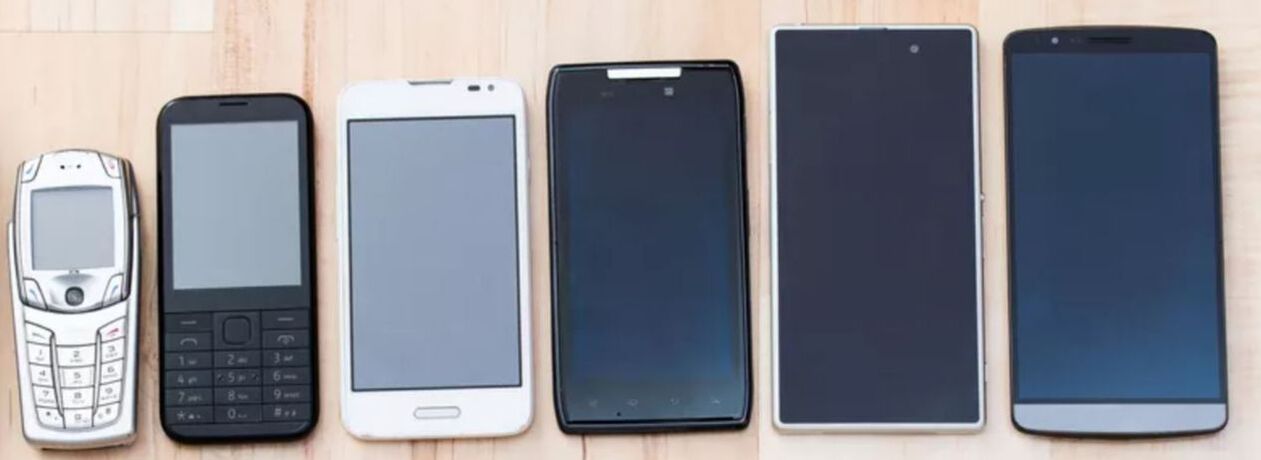
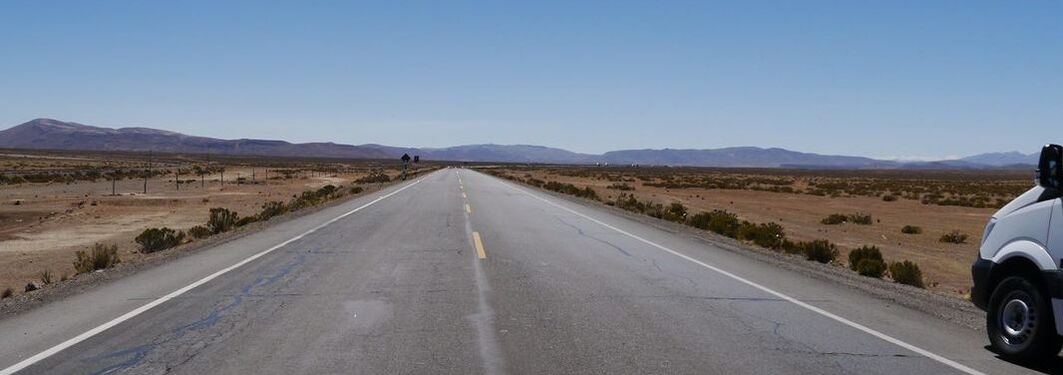
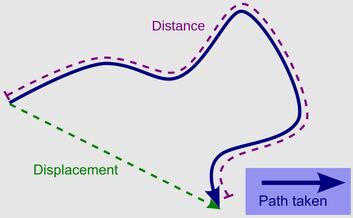


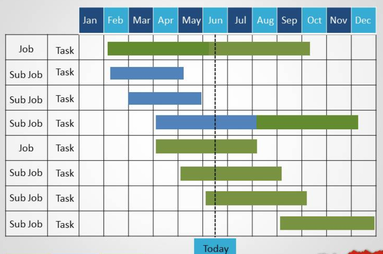



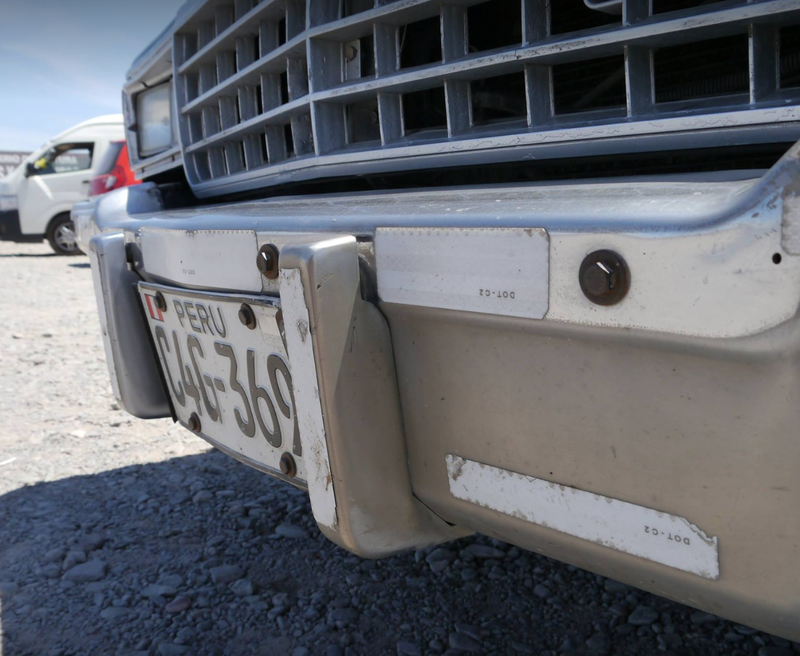
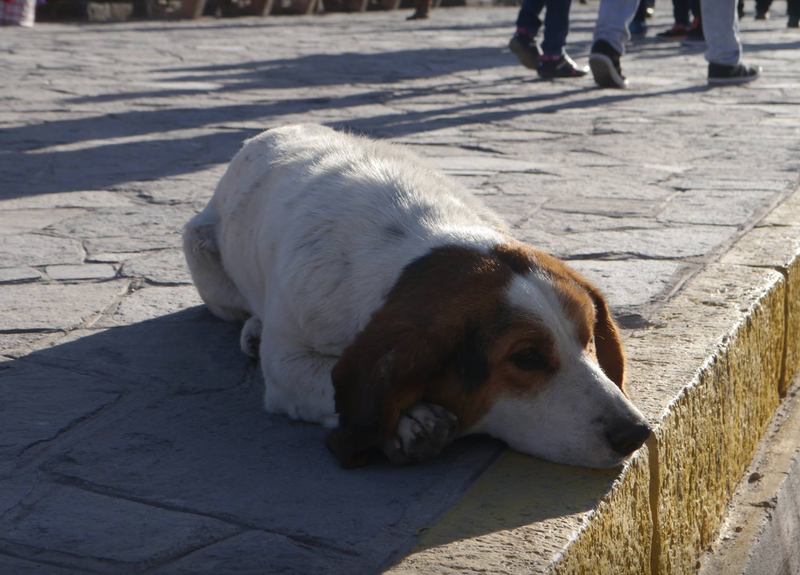
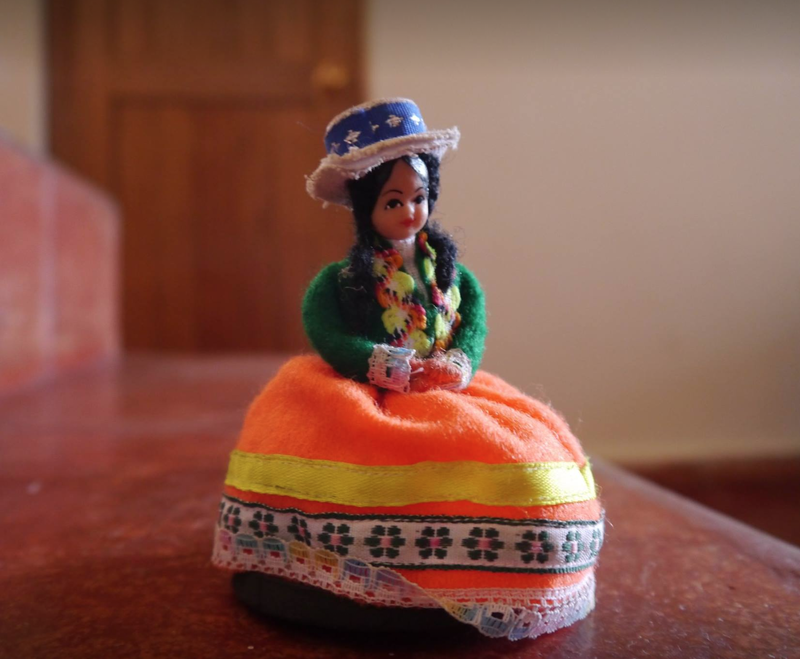
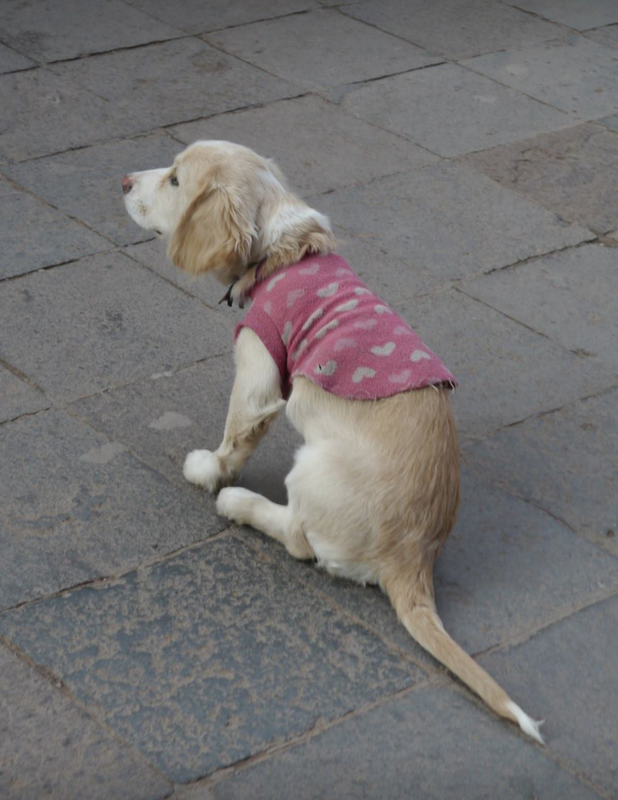
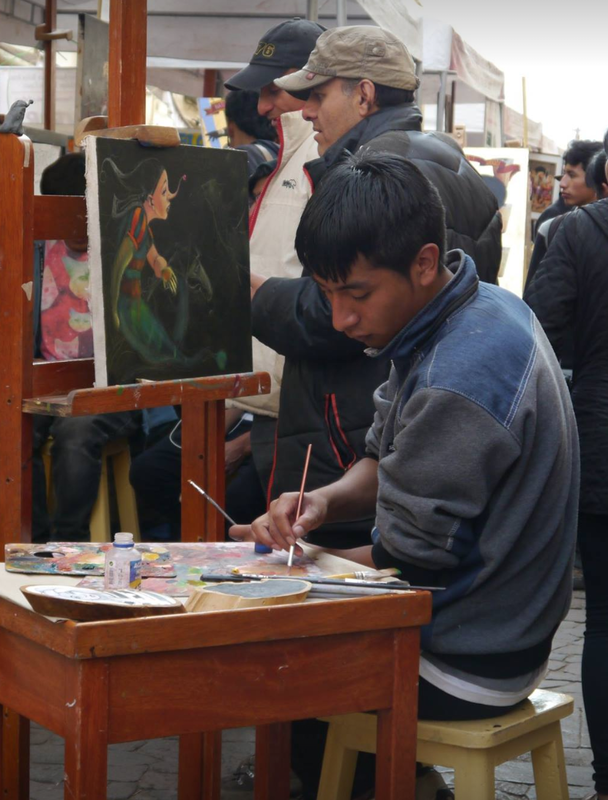

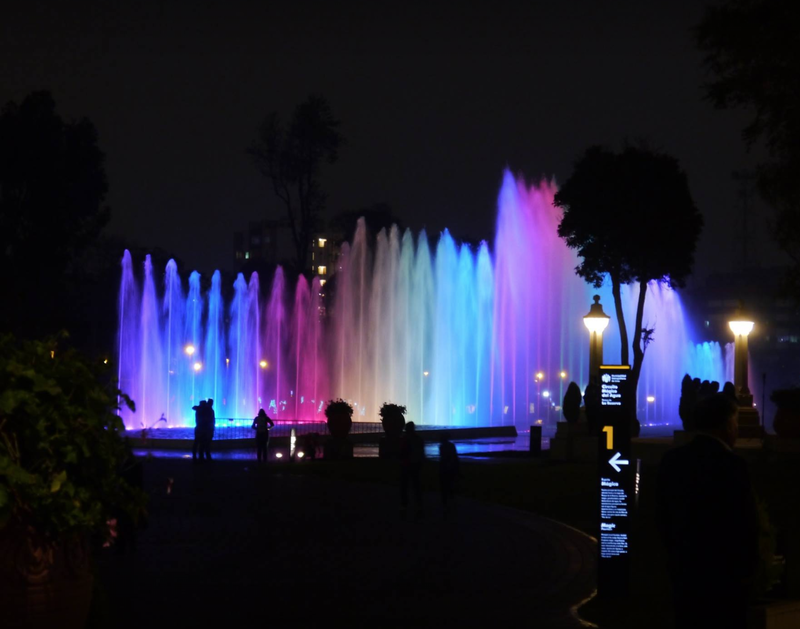
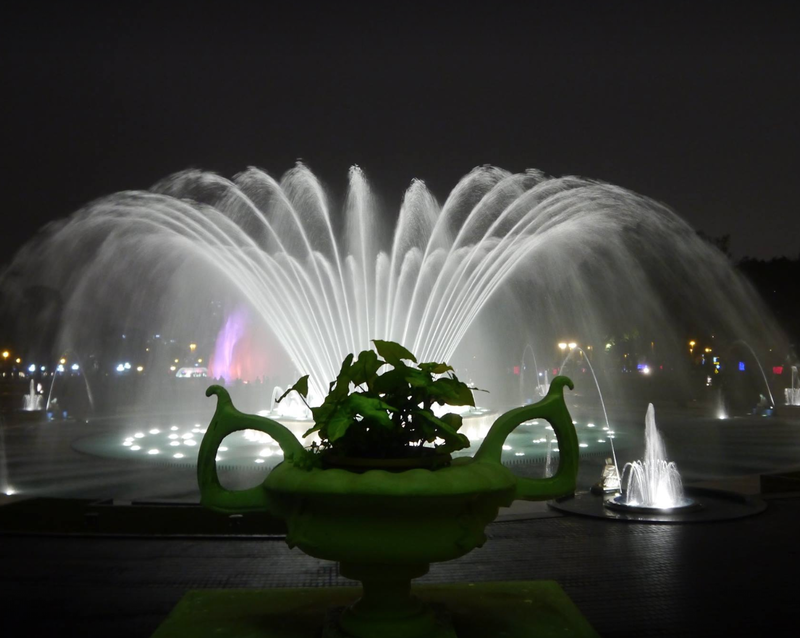
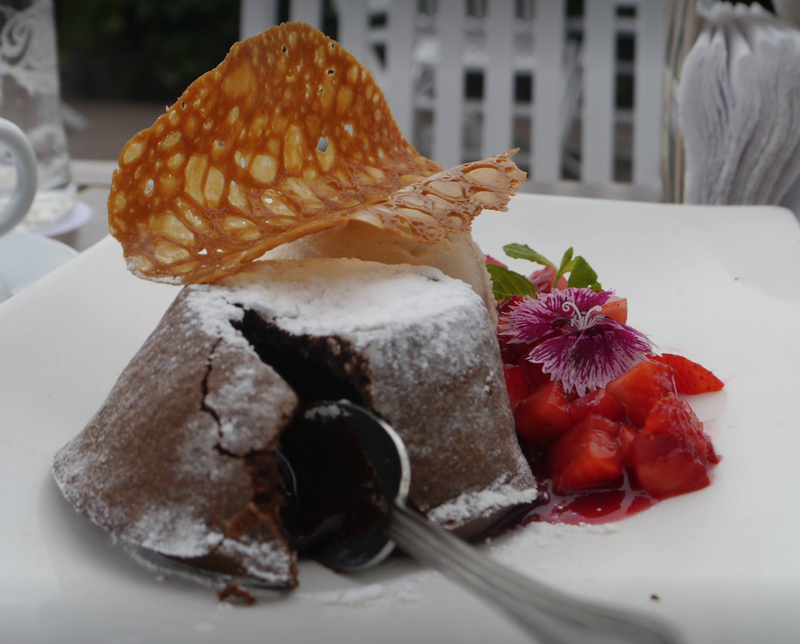
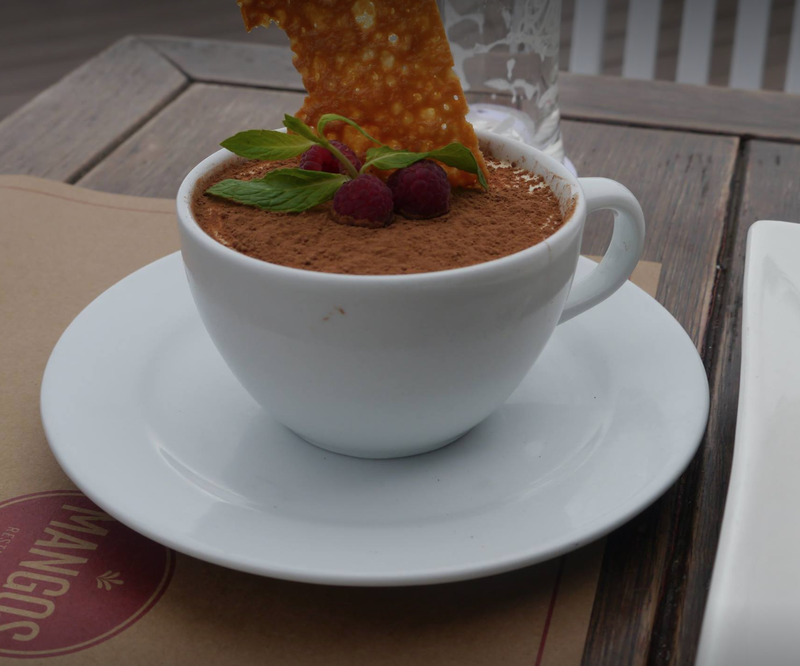
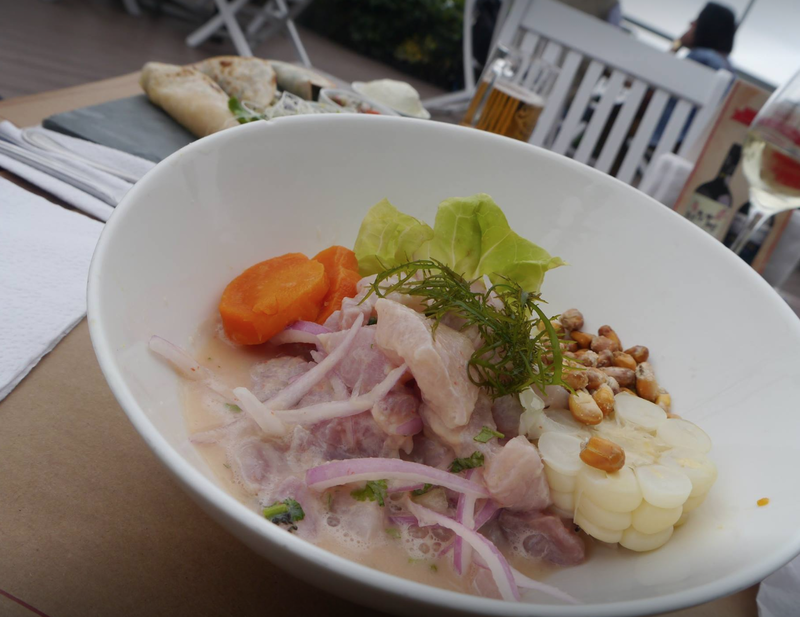
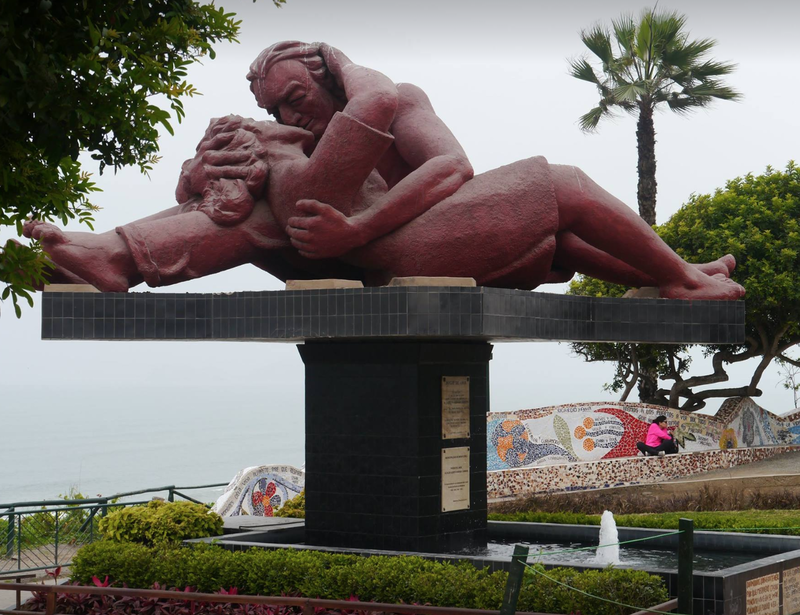

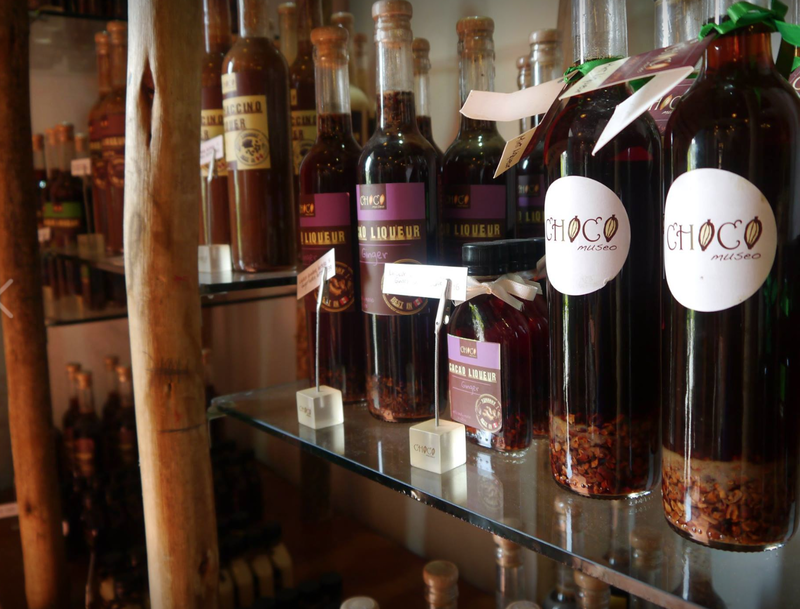
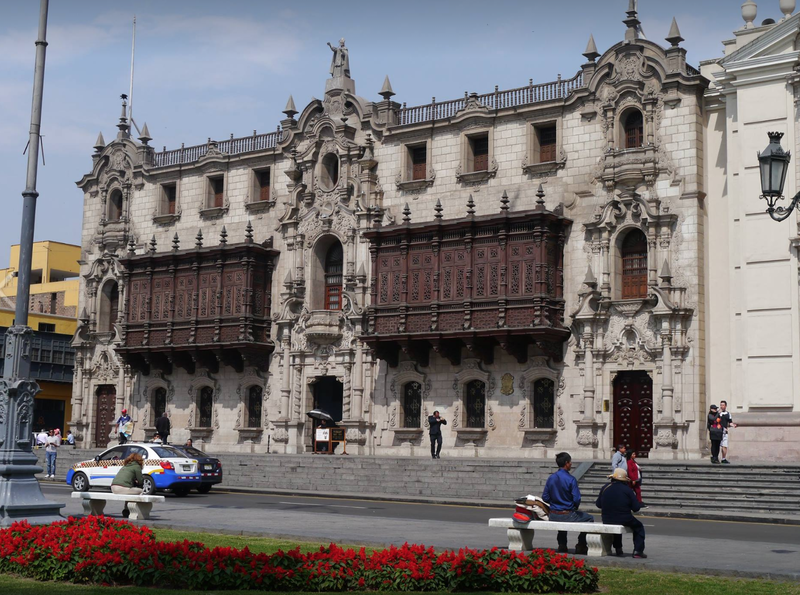
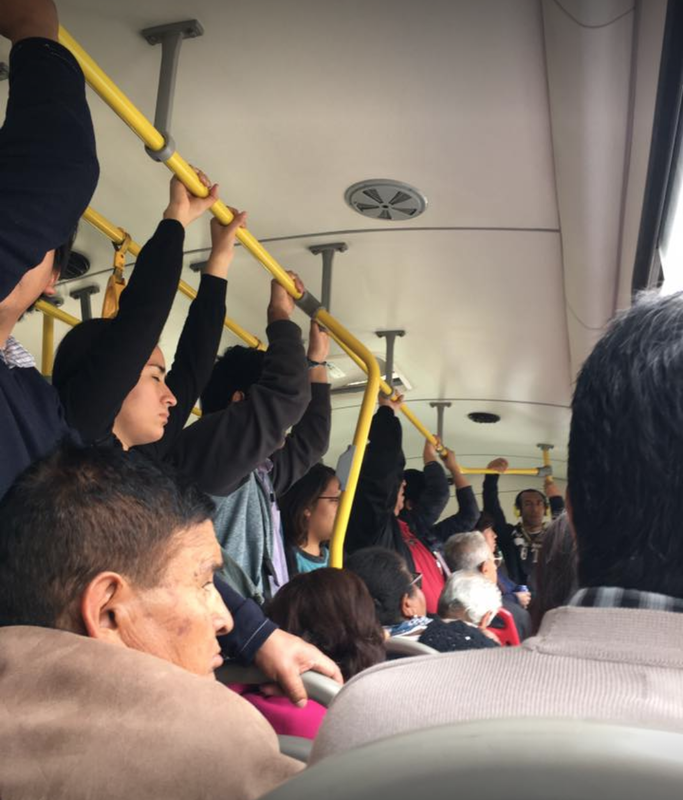
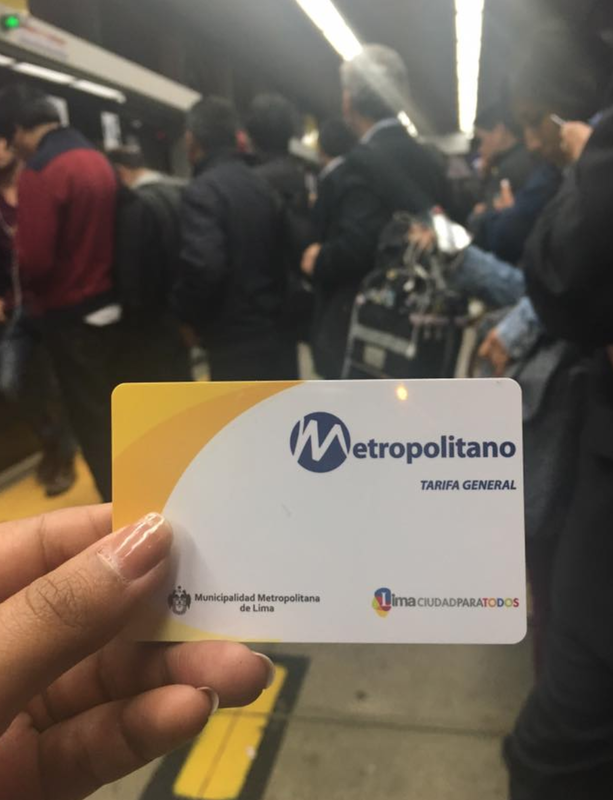
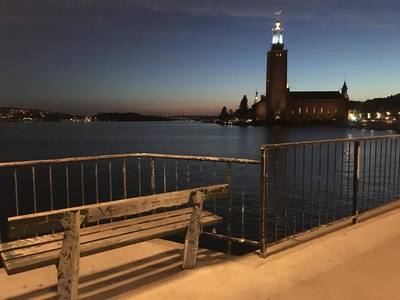
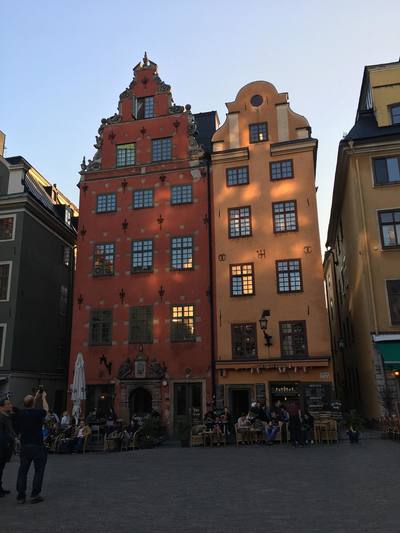
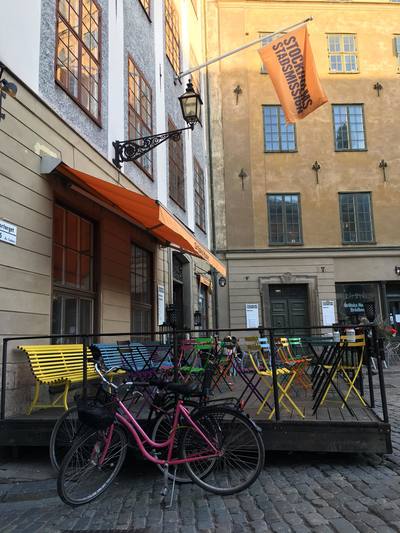
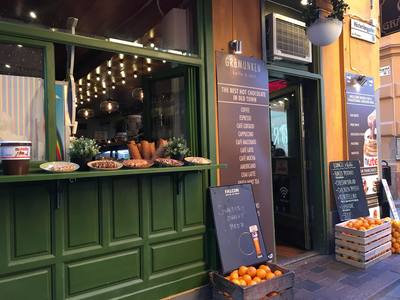
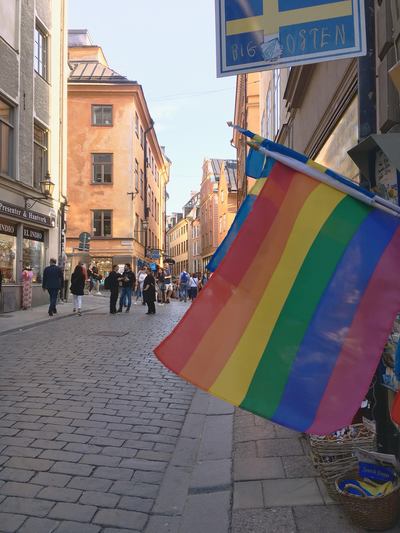
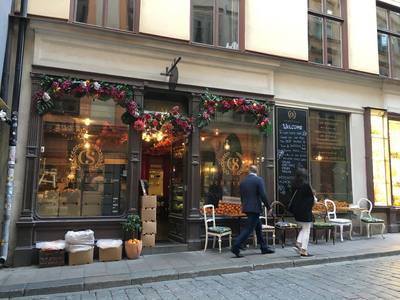


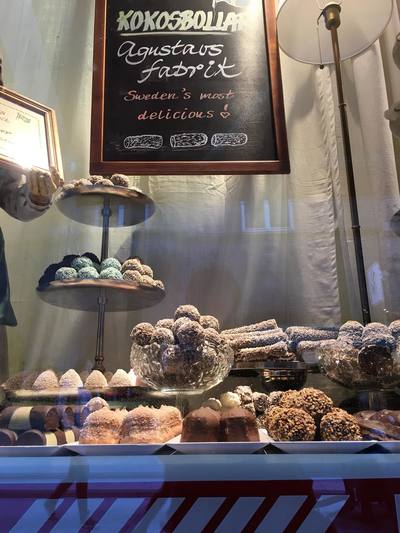
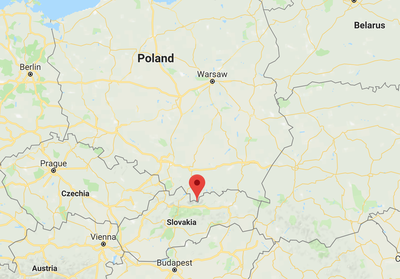
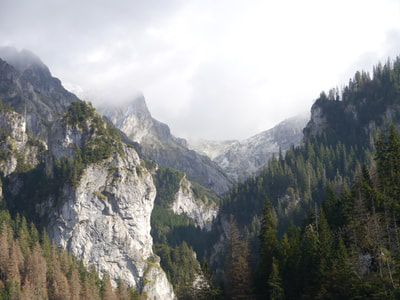
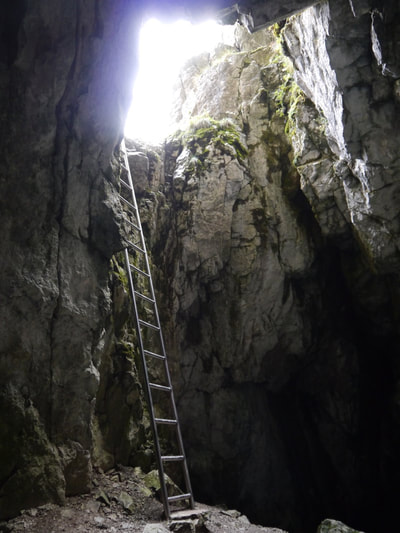
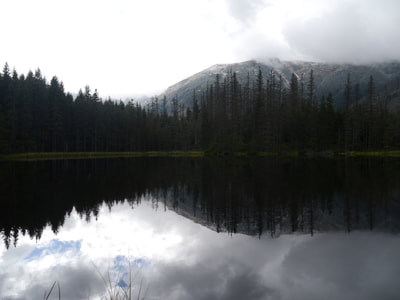
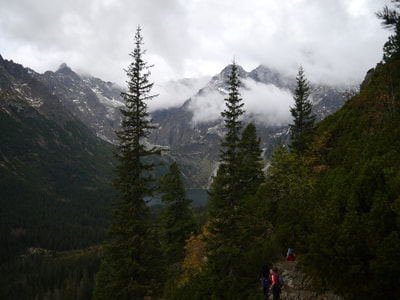
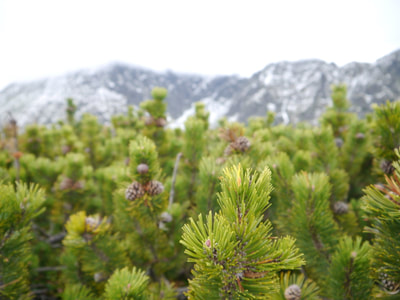
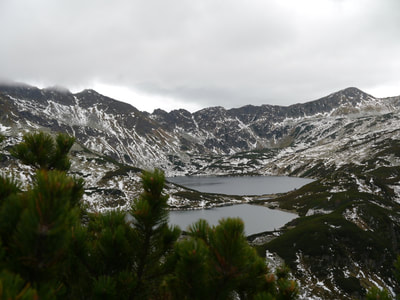
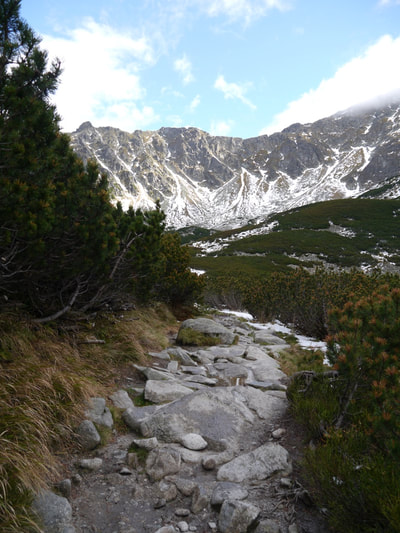
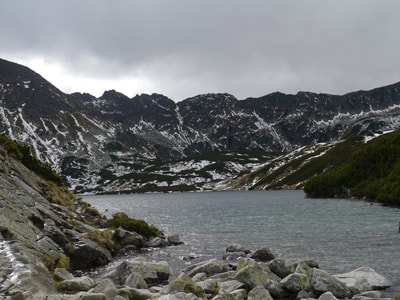
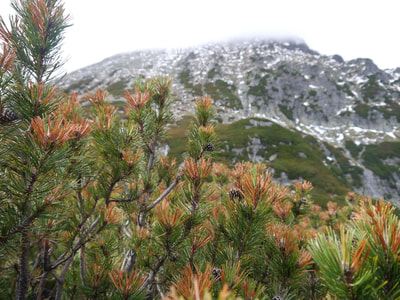
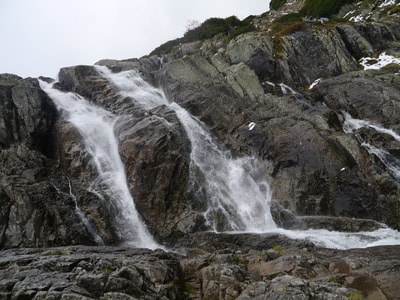
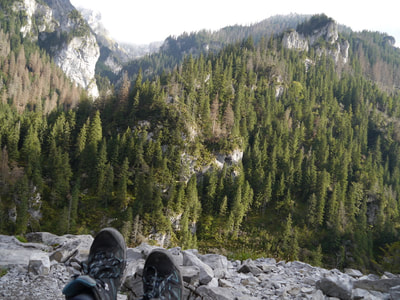
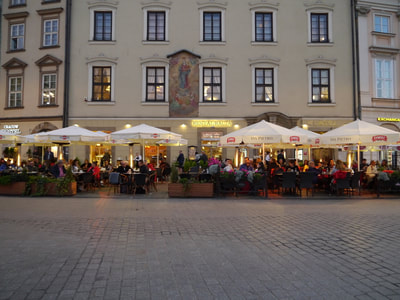

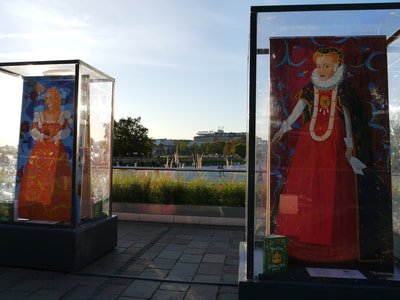
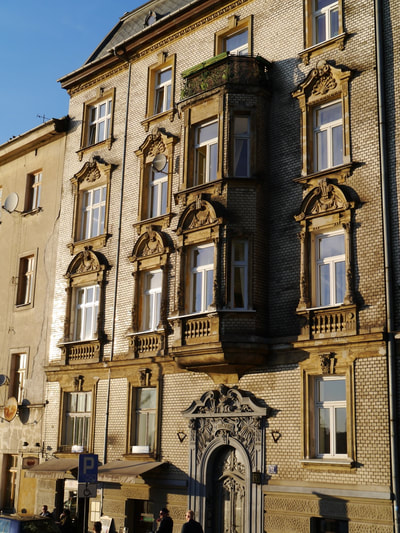

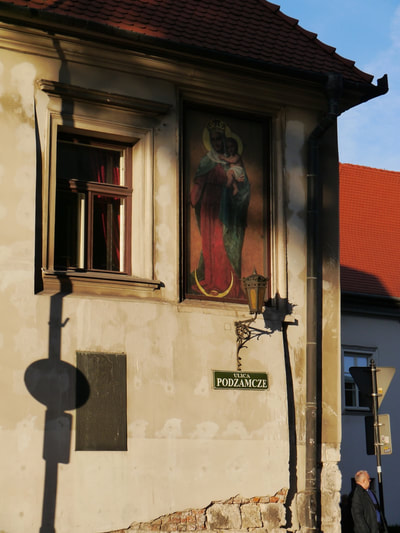
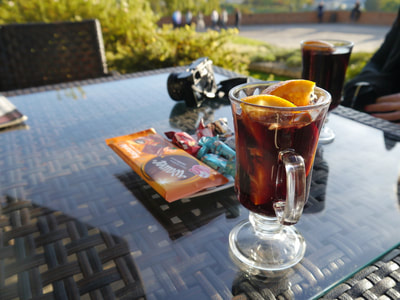
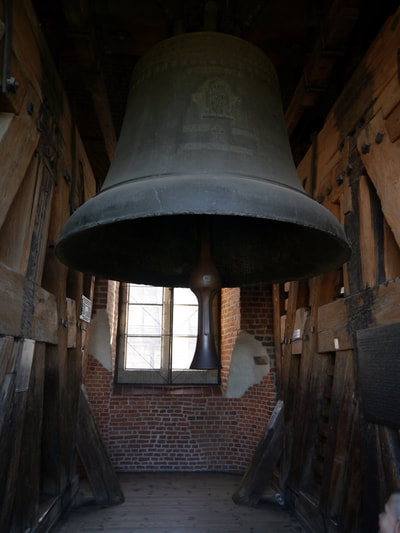
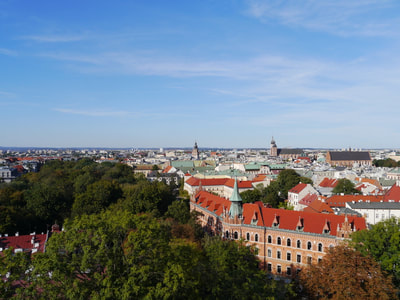
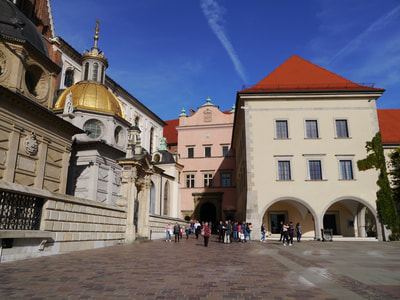
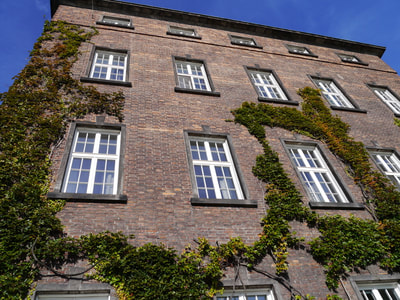
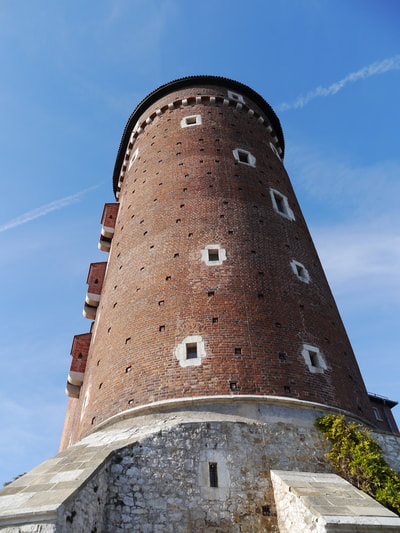
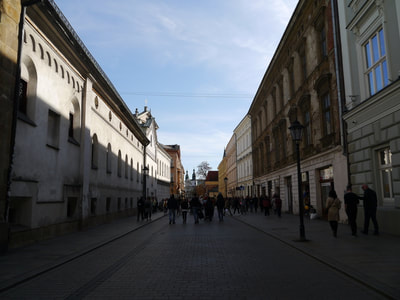
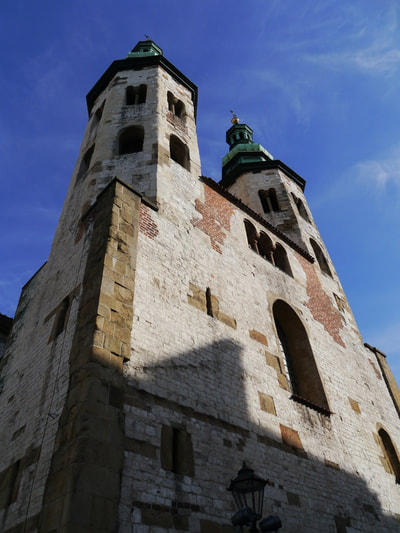
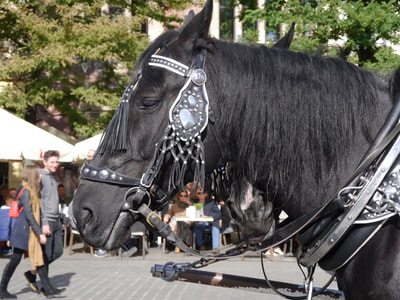
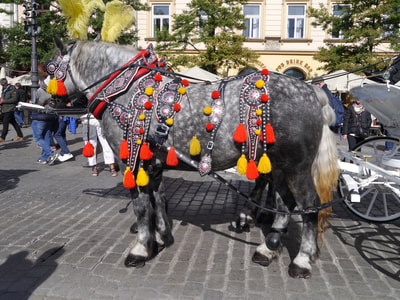
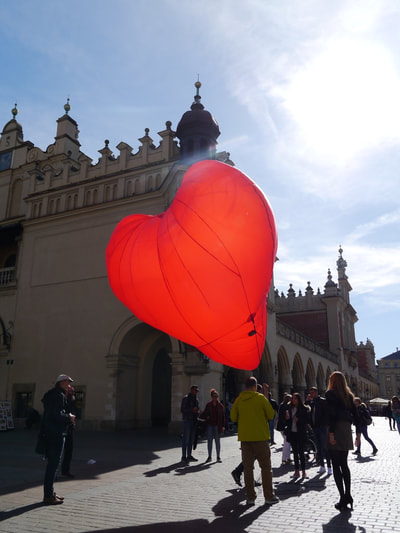
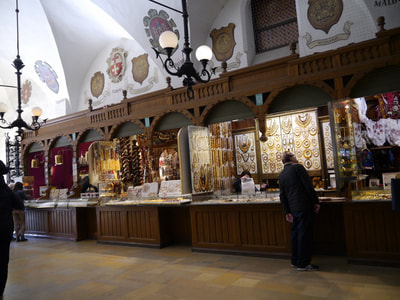
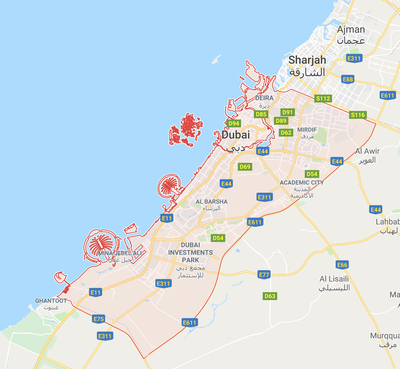
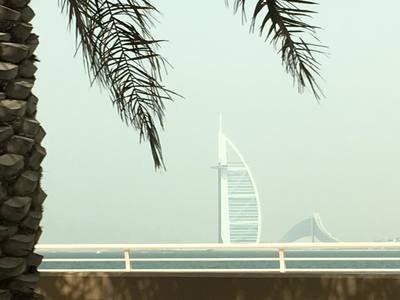
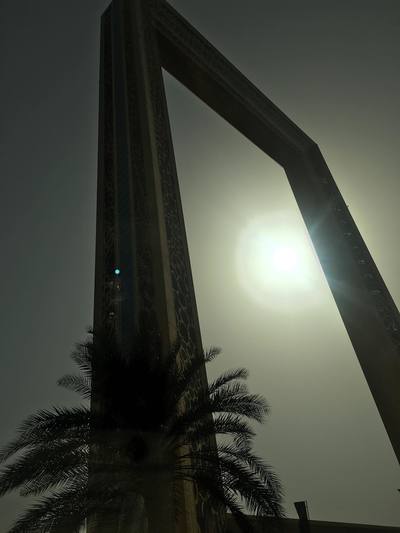
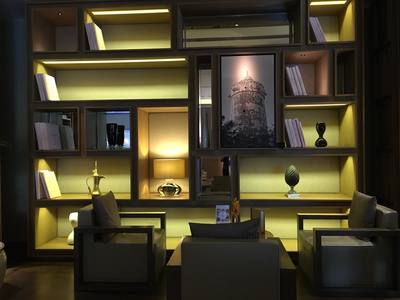
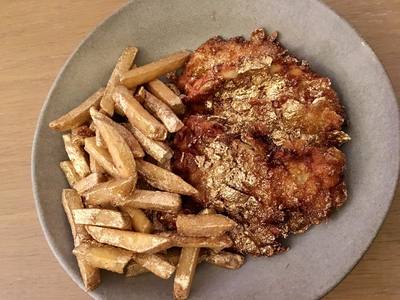
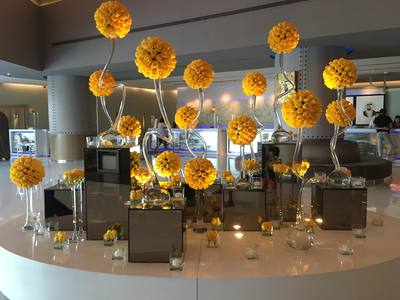
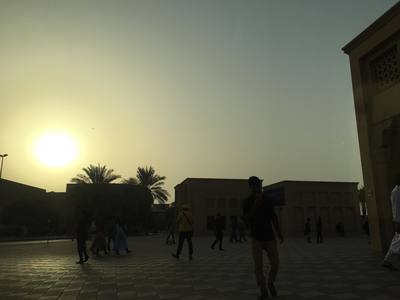
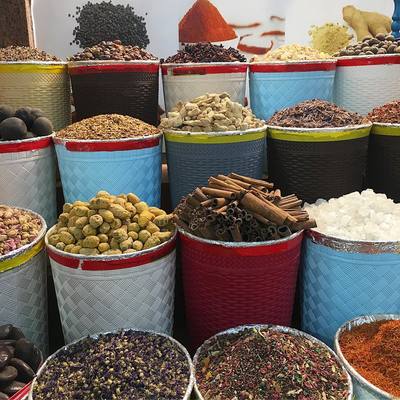
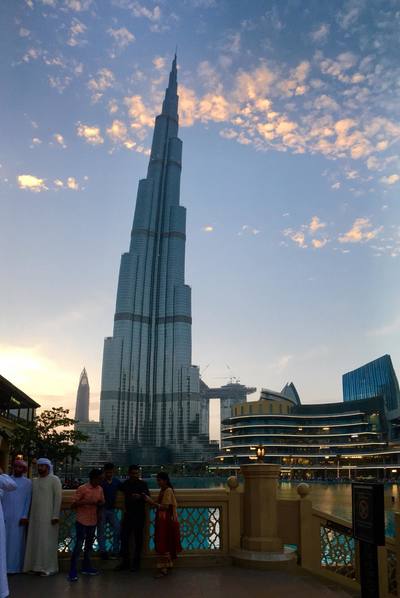
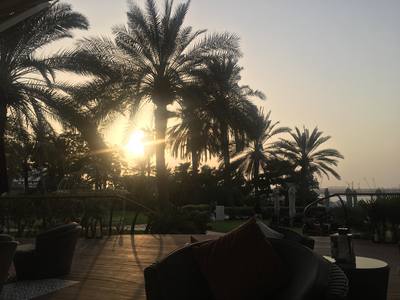
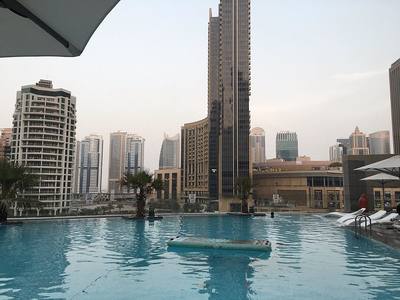
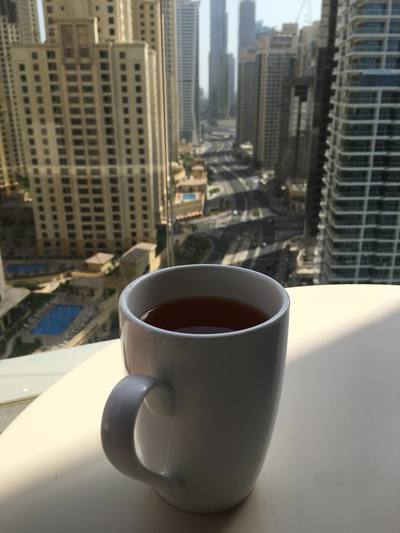
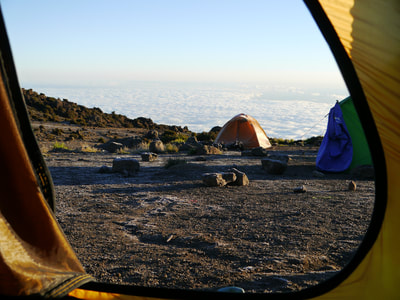
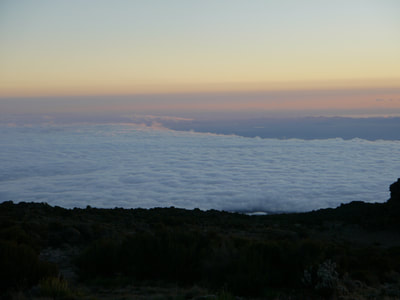
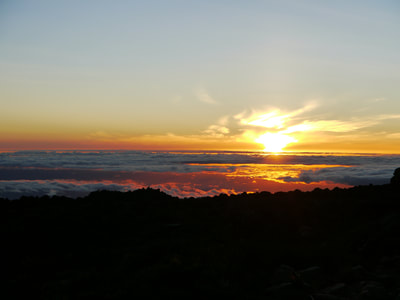
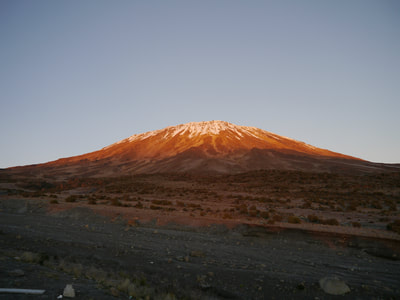
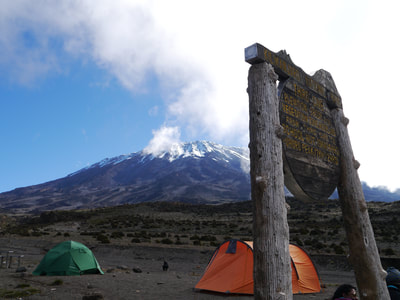
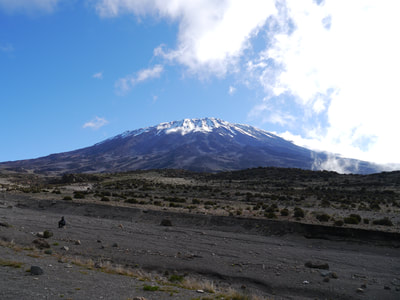
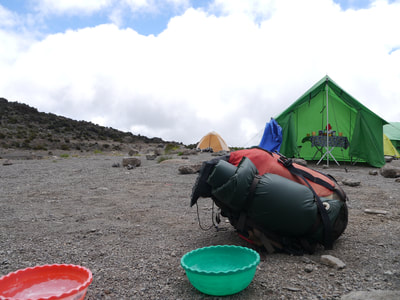
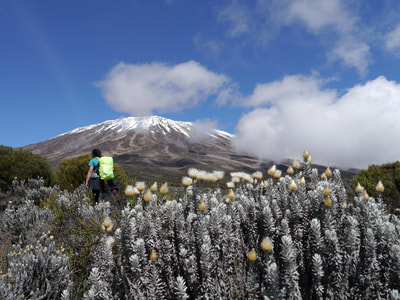
 RSS Feed
RSS Feed